

Go down in pet-sitting history…
What will the 2023 Pet Sitter of the Year receive?
● $500 cash prize
● One-year free PSI membership
● International recognition via news releases, social media and promotion on petsit.com
● PSY logo to use on your website and other marketing materials
● An expenses-paid trip to PSI’s 2023 conference (includes registration, travel and hotel accommodations)
● Recognition at the awards ceremony during the 2023 conference
● Waived testing fee for PSI’s CPPS® Exam, if not already certified
Note: This award is open to all PSI members of at least three years regardless of location or business size.
● 2022 Morgan Andenas Weber, Lucky Pup Adventures, Sioux Falls, S.D.
● 2021 Daniel Reitman, Dan’s Dog Walking and Pet Sitting, Port Washington, N.Y.
● 2020 Jeanne Crockett, CPPS, Crockett’s Critter Care, New Bern, N.C.
● 2019 Liz Hyde, CPPS, Pet Charmers, LLC, Gastonia, N.C.
● 2018 Cathy Vaughan, CPPS, Cathy's Critter Care, Schertz, Texas
● 2016 Carrie Feinberg, CPPS, Safe Haven Advocate Pet Care, LLC, Elgin, Ill.
● 2015 Gerry Arner, CPPS, Pet 'n Nanny LLC, Wake Forest, N.C.
● 2014 Michelle Miller, CPPS, At Home Comforts Pet Sitting, Panama City, Fla.
● 2013 Sari Reis, CPPS, Mission Valley Pet Sitting Services, San Diego, Calif.
● 2012 Vanessa Sorace, CPPS, Zoo Sitters LLC, Cape May Court House, N.J.
● 2011 Jordan Di Marco, CPPS, Dogma Catma Pet Sitting, Boulder, Colo.
● 2010 Scott Black, Personal Touch Pet Sitting, Kingwood, Texas
● 2009 Cara Armour, Active Paws, Watertown, Mass.
● 2008 Rob Nager, Decadent Dog Inc., Needham, Mass.
● 2007 Jen Miler, Doggone Purrfect Pet Care, St. Petersburg, Fla.
● 2006 Darlene Ehlers, Pampered Pets Home Care, Blue Jay, Ohio
● 2005 Tammy Iseri, The Pet Sitter, Elk Grove, Calif.
● 2004 Holly Cook, Special Pet Care Services, Marysville, Mich.
● 2003 Dawn Secord, Fur, Feathers and Fins LLC, Chino Hills, Calif.
● 2002 Rosary Bovello, Gaithersburg Pet Sitting Inc., Gaithersburg, Md.
● 2001 Mark Gleckman, A Helping Hand, Acton, Calif.
● 2000 Pat Love, Pets Are People Too! Hephzibah, Ga.
● 1999 Heidi Kistler, The Pawsitively Pampered Pet, Berkeley, Calif.
● 1998 Susan Baker, Pet’s Best Friend, Rocky Mount, N.C.
● 1997 Sharon & Helene Jones, Sisters Sitting Service, Ft. Lauderdale, Fla.
● 1996 Melanie Hocever, There’s No Place Like Home, Phoenix, Ariz.
● 1995 Carol Proffitt, Paw Prints Pet Care, Knoxville, Tenn.
PET SITTER’S WORLD
IN THIS ISSUE
2 PSI’s 2023 Pet Sitter of the Year nominations
4 From the PSI President
5 Outside contributors in this issue
6 CPPS Quiz
7 Things to post on social media (May & June)
8 Insurance Issues
12 PSI Member Spotlight: Kyle Morse, Simply Yours Concierge
17 Does your company send out a newsletter?
18 How to increase your search ranking in Google organically
21 Finding your “sole” mate
21 Watch out for Lyme disease
22 Do I really need a service contract?
23 Cat Scratch Disease—What you need to know
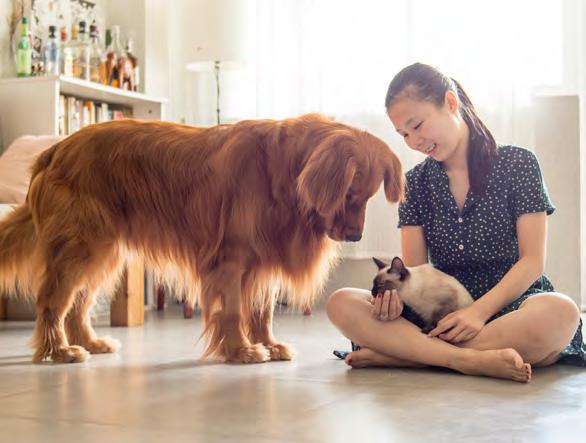
26 PSI Member Roundtable: Networking with other local pet sitters
29 PSI’s next free member webinars
29 Proven pet business principles from Patti J. Moran
30 Living your best #petsitterlife
32 The power of pet sitter connections
34 5 policies you need to lead your team effectively
36 Professional pet sitter’s to-do list
38 The common communication barrier no one’s talking about
40 Empowering your pet business through reading
42 PSI’s 2022 Pet Sitter World Educational Conference
45 Using Mother’s Day and Father’s Day to boost business
46 Springtime pet safety
51 Pro Tips

24 Reaching prospective clients with both four- and two-legged clients On the cover Meet PSI member Kyle Morse, owner of Simply Yours Concierge in Franklin Park, New Jersey. Read more about Kyle on p. 12.
52 The do’s and don’ts of online networking


Patti Moran, Beth Stultz-Hairston, Michelle Boles, ADVERTISING
PSI Advertising
P.O. Box 457, Pfafftown, NC 27040 advertising@petsit.com
HOW TO REACH US
P.O. Box 457 Pfafftown, NC 27040
Phone: (336) 983-9222, Press 1 for Member Services
Email: info@petsit.com
Website: www.petsit.com
OFFICE HOURS
Monday—Thursday, 9:30 a.m.—5:00 p.m., Eastern Time
STAFF
Patti Moran, Beth Stultz-Hairston, Debbie Leonard, Operations Manager
Michelle Boles, Web Content Manager

Meghann Evans, Education & Outreach Manager
Casey Parker, Membership Manager
©Copyright 2022 by Pet Sitters International Inc. All rights reserved.
Pet Sitter’s World is the official publication of Pet Sitters International, Inc. (PSI). Printed in the USA.
Pet Sitter’s World is published by PSI and is available exclusively through PSI membership. No portion of this publication may be reprinted or reproduced without the written consent of PSI and all authorized reproductions must cite Pet Sitter’s World, published by Pet Sitters International, as the source. Requests for reprint permission should be addressed to Editor, Pet Sitter’s World, P.O. Box 457 Pfafftown, NC 27040.
Publication of any article or advertisement should not be deemed an endorsement of the opinions expressed or products advertised. Pet Sitter’s World is a trademark of PSI.
Maybe you’re finding yourself in a similar state of burnout? Here are some simple steps I’ve taken recently to “get back on track” that may help you as well:
Set boundaries. For me, this involved putting limits on how “connected” I was. It’s easy to get in the habit of checking your phone 24/7, so I’ve implemented some personal rules—no checking email after a specific time in the evening and no work-related social media on the weekends (posts can be pre-scheduled!).
Simplify processes. Look at your regular tasks—whether that’s scheduling, posting on social media, invoicing, etc. Are there things you can automate to save time? Non-work tasks can be simplified as well (e.g., meal prepping, laying out your clothes the night before, etc.).
Soak in the sunshine. For me, being outdoors is such a stress reliever—hiking, walking my dogs, etc. Maybe you enjoy a massage, meeting up with friends, a spa day, etc.? Make time for the things you love! Remember, though, there aren’t enough bubble baths in the world to make up for bad boundaries (see tip #1!).
Do you have other tips for avoiding burnout? I’d love to hear them! Send me an email to beth@petsit.com …but not after 7 p.m. on weeknights (boundaries!).

PSI President
p.s.—I hope these tips are helpful, but they should not replace advice from a healthcare or mental healthcare provider. If you have symptoms that are not manageable, please consult a medical professional!


Outside Contributors in This Issue
owner and founder Tails, specializes in passionate petpreneurs strategies that are profitable, and uniquely tailored social media, and resources, she unique tale to captivate fans! Learn more at
the Pet Safety Crutaught 25,000 humans life-saving skills. Her mission is to help YOU make a difference in the life of an animal through her pet senior pet care and disaster preparedness classes. Denise has appeared on television, radio and in magazines, and has authored more than a dozen books. She is the proud recipient of multiple awards from both the Cat and the Dog Writers Associations, including the PSI Professional Pet Care Award Learn more at www.PetSafetyCrusader.com


Terri Howell has been a leader, writer, and speaker for over a decade. She has owned several small businesses and is an organization consultant and coach with Motus Network LLC. Terri holds a master’s degree in organizational psychology and specializes in change management. Additionally, she is a crisis response specialist, certified in critical incident stress management through the International Critical Incident Stress Foundation. As a Gallup StrengthsFinder coach, Terri has also coached individuals, executives and teams and led organizational development training for public, private and non-profit organizations.

Doug Keeling is the owner and founder of the award-winning Bad to the Bone Pet Care. Doug began pet sitting professionally in 2013 and has since grown a team of pet professionals servicing Northeast and Central Florida. Doug is also a traveling offering his services across the country. You can follow adventures on his Instagram @thewanderingpetsitter. Learn more on the Bad to the Bone Pet Care YouTube Channel
Erika Godwin is owner and president Barketing Solutions Inc, a professional website design and maintenance company designed to support businesses in the pet industry. Erika graduated from Elmira College in Elmira, New York, with a BSc in Business Administration with a concentration in Management and Marketing. After graduation, she managed a startup business incubator in Ottawa, Ontario, then moved on to founding ProPet Software in 2014 and is currently the CMO of this growing kennel software. Learn more at barketing.co
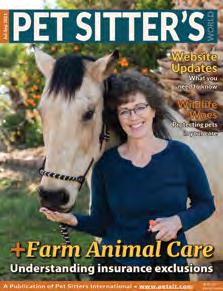



David Pearsall is the vice president of Business Insurers of the Carolinas (BIC) in Chapel Hill, North Carolina, which provides the Pet Sitters Liability Protection Policy and other insurance products to PSI members in the U.S. Visit www.psi-ins.com to contact BIC by phone at 1-800-962-4611.

Courtney Underwood is an HR Alignment Strategist and CEO of Kassar Consulting. With over 15 years of experience in human resources and talent management, Courtney understands the unique challenges that companies face when hiring and their talent. As an HR Alignment Strategist, Courtney helps her clients understand the importance of an effective team and how it impacts the growth and profitability of their business. Learn more at kassarconsulting.com.
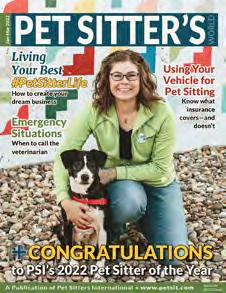

Interested in contributing to Pet Sitter’s World? We are always looking for contributing writers to share expert tips and advice that will benefit professional pet-sitting and dog-walking business owners. Have an article idea you’d like to pitch for possible inclusion in an upcoming issue? You can complete PSI’s Call for Experts submission form at petsit.com/call-for-experts
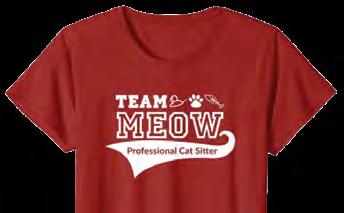

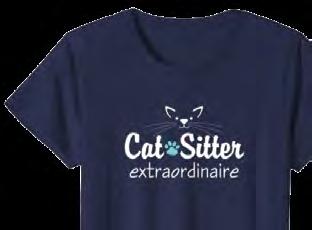

Now available on
Pet sitter apparel designs by Pet Sitters International
Attention CPPSs!
Take the Pet Sitter’s World Quiz to earn renewal CEUs.
You can get a maximum of 10 CEUs per three-year renewal cycle with these quizzes. Look for a new one in each issue of Pet Sitter’s World!
If you are a CPPS, you can now earn one (1) CEU for answering all five of these questions correctly. The answers can all be found in the pages of this issue of Pet Sitter’s World.
Important: To submit your quiz answers, please visit petsit.com/ceu-request to fill out and submit PSI’s CEU Request Form. Quiz answers should be submitted through this form and not emailed directly to PSI.
1. True or False: While dogs can detect scents 10,000 – 100,000 times better than humans, they have only 1/5 the number of receptor cells in their tongues.
2. What percentage of dogs with Lyme disease become ill?
3. Fill in the blank: According to PSI’s latest State of the Industry Survey, ____% of PSI pet sitters use Facebook to promote their pet-care businesses.
4. What is the name of the bacteria that is responsible for cat scratch disease (CSD)?
5. What are the top three ranking factors for local organic search?
Renew Your CPPS ® !
View the complete list of CPPS renewal CEU options. In the Members area of petsit.com, use the Certification Program drop-down link to Certification Renewal > Certification Renewal Options. A link at the bottom of the page will take you to the complete listing.
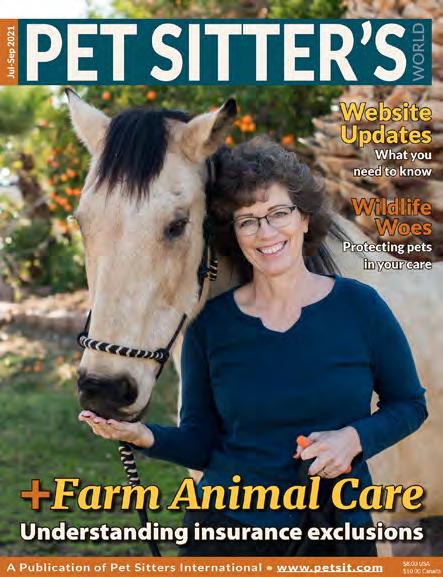

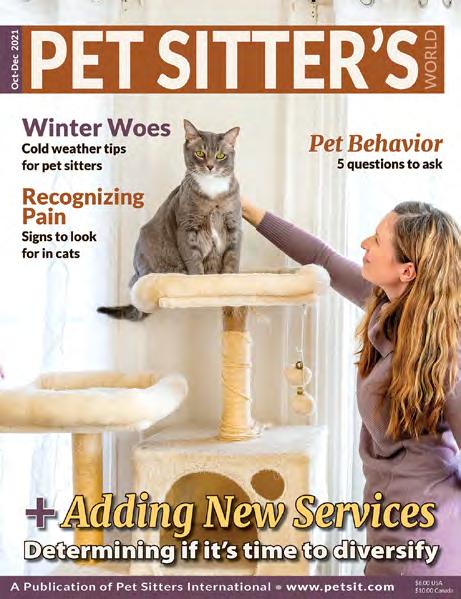


your photo at petsit.com/magazinecover-photo.
Things to post about on social media: May & June 2022
Below is a list of pet-related observances (and a few other interesting celebrations) you can highlight on your company’ social media pages in May and June.
MAY
PSI’s Pet Sitter Safety Month™
National Pet Month
Chip Your Pet Month
Responsible Animal Guardian Month
• May 1-7: National Pet Week®; Be Kind to Animals Week®; National Small Business Week
• May 1: Mayday for Mutts
• May 3: National SpeciallyAbled Pets Day
• May 7: National Dog Mom’s Day
• May 8: Mother’s Day
• May 14: National Animal Disaster Preparedness Day; International Chihuahua Appreciation Day
• May 20: National Rescue Dog Day
• May 23: World Turtle Day
• May 30: Memorial Day (U.S.)

JUNE
National Pet Preparedness Month
American Humane’s Adopt-A-Cat Month®
Adopt a Shelter Cat Month
National Foster a Pet Month
National Microchipping Month

• June 4: Hug Your Cat Day
• June 5-11: Pet Appreciation Week
• June 14: World Pet Memorial Day
• June 19: Father’s Day
• June 20-24: PSI’s Take Your Pet To Work Week®
• June 20: PSI’s Take Your Cat To Work Day®
• June 24: PSI’s Take Your Dog To Work Day®
Post these images on social media
As a PSI member, you get access to free social-media images for pet-related holidays and observances each month. Visit PSI’s private Facebook group for members, Professional Pet Sitters Chat, to view the latest images and right-click each image to save it to your computer. Then, post them to your social-media accounts and personalize the captions for your business.
Below, we’ve included a few examples:
Did you know May 1-7 is National Pet Week? At ABC Pet Sitters, EVERY week is pet week to us— and we love pampering your pets. How do you pamper your pets? Let us know in the comments.
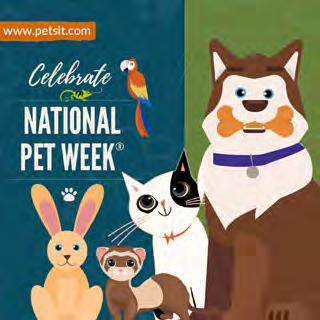
June is ASPCA’s Adopt a Shelter Cat Month. Did you know ABC Pet Sitters offers $5 off your first pet-sitting visit when you’ve adopted your pet from one of our local shelters or animal-rescue groups?
Visit our website at abcpetsitters.com to learn more and book your free initial consultation.

Be sure to visit PSI’s private Facebook group for members each month to download free socialmedia images for some of these observances.
Insurance Issues
By David Pearsall, Business Insurers of the Carolinas
In Your Home Pet Care Coverage
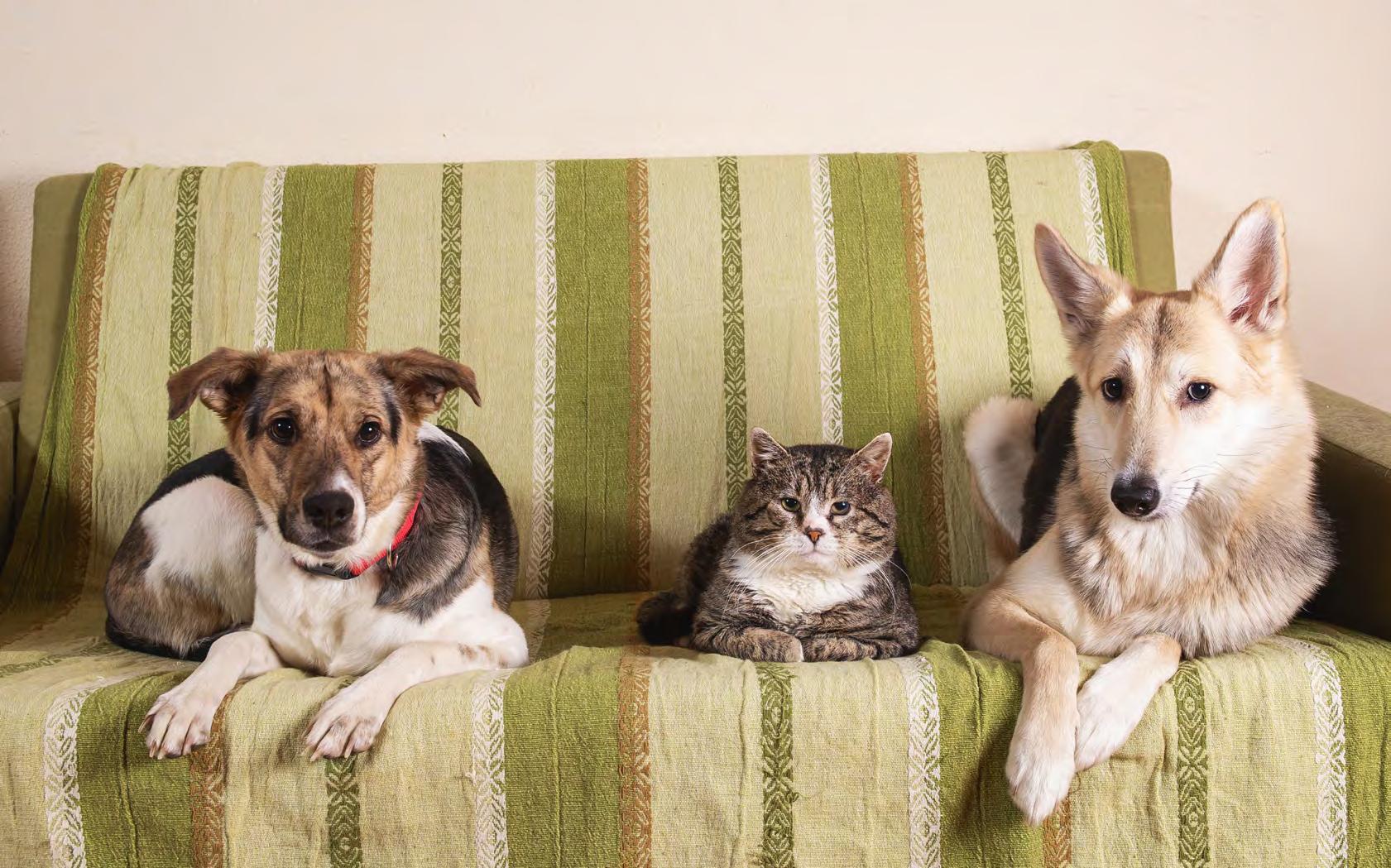
In your home pet care (caring for clients’ pets in your own home) has been around for many, many years. However, over the last couple of years with the COVID-19 pandemic this alternative to traditional pet sitting has certainly increased in popularity. This also appears to ring true with PSI members insured through the PSI liability program— today, almost 25% of members insured under the program now include coverage for this service as opposed to just 5% a decade ago.
Unfortunately, many people will jump at the opportunity to board pets in their home and sign up on one of the online directories without considering the risks they may take by doing so. So, for this article, let’s take a look at some of the claims we have seen arising out of in your home pet care (they too have increased!) and examine the different risks involved to make sure PSI members (and any others that may be reading this) are aware of the exposures that exist when offering this service.
Understanding the legalities of in your home care
Before we begin, it is important to note that some exposures that exist may not be insurance related, but still may pose a risk to your business. For example, many states and municipalities have laws in effect that are directly related to boarding pets in your home.
Some require you to take out a permit in order to board, while others may not allow you to board in your home at all due to zoning regulations. Be aware that even if you are boarding even just 1-2 pets in your home at a time, and are being paid for it, that this would likely be considered a home-based business, and many communities will have specific zoning laws that stipulate what types of home-based businesses are allowed in a given community. To protect yourself be sure to consult with your town/ city, county and state officials to be sure you are operating legally. Otherwise, you may one day be hit with an unexpected fine and/or a cease-and-desist letter. (Editor’s
note: In addition to zoning laws, other regulations may apply. In the U.S., for example, the Department of Agriculture in many states requires you to apply for a license to board pets.)
Understanding the liability risks of in your home care
Now let’s take a look at in your home pet care in terms of liability risk, and how it differs from traditional pet sitting in a client’s home. When you are paid to take care of a client’s pet in your home you cross a line in the insurance world from personal liability to business (commercial) liability.
Some people may think they are covered automatically if they have a homeowners or renter’s policy, which typically includes personal liability coverage at their premises, but most homeowner’s/renter’s policies specifically exclude coverage for business-related liability claims. Therefore, if a dog in your care were to bite someone while at your home or bite another dog in your care, you need a business liability policy that specifically provides coverage for in your home pet care, including vet medical coverage for those pets in your care.
Many insurance companies are hesitant to offer this coverage, due to crossing the line between personal and business liability exposures. For example, what if you invite a friend over and that friend gets bitten by a dog in your care? Or what if a contractor or delivery person visiting your home were to be bitten? To better illustrate, here are a couple of actual claims examples:
• While staying at the pet sitter’s home, a client’s dog got into an altercation with the pet sitter’s roommate’s dog. The roommate was bitten attempting to separate the dogs. Total paid $4,174.
• A pet sitter opened the door to her home just as a delivery driver was dropping off a package. The driver was bitten on the ankle by a dog in her care.
Total Paid $12,370.
Another difference to consider when boarding in your home is the pets themselves. After all, they are the ones you are caring for. If they have never been to your home before they are not familiar with where things are, where you want them to hang out, or other people or pets that may be in the home. When you are taking care of pets in the client’s home, they know all of these things and are accustomed to their routine.
Bringing clients’ pets to your home may just rock their world—or cause them injury! Below are several examples of claims:
• A dog swallowed a sock while staying at the sitter’s home and required surgery. Total Paid $4,969.
• A dog suffered a ruptured disk while staying at the pet sitter’s home. Total Paid $5,054.
• A dog ate sheetrock and passed away while staying at the sitter’s home. Total Paid $6,217.
• A pet sitter was taking care of a client’s dog in her home. The dog attempted to be social with the pet sitter’s personal cat, but the cat scratched the dog in the eye. Total Paid $4,170.
Furthermore, if you are providing in-home boarding and are boarding more than one client’s dog at a time, you run the risk of dog fights and related injuries. This is by far the number one claim we see arising out of in-home boarding operations. The fact is, dogs may get along great with other pets in their own household, but if you put them in with other pets from other families without caution, you may be in for a rude awakening.
Most animal shelters and boarding kennels are aware of this exposure and typically perform temperament tests before placing a dog in a playgroup with other dogs. It is highly recommended that if you are going to board multiple dogs that you do the same, as some dogs can suffer anxiety and be stressed if outside of their own home environment. While some dogs are simply more prone to aggression, others are more fearful in groups and around others.
Here are a few examples of what can go wrong:
• Two dogs being boarded at a pet sitter’s home got in a fight. One sustained injury to his ear and required vet treatment. Total Paid $1,229.
• Two dogs staying in a pet sitter’s home got into a fight, and one of them had to be hospitalized due to the loss of one eye and multiple other injuries. As a result of the injuries, the dog lost a lot of blood and passed away. Total Paid $17,311.
• Multiple dogs were being boarded in a sitter’s home. One of the dogs attacked two others, causing multiple injuries. Both required extensive medical care. Total Paid $8,238.
In addition to injuries to client’s pets, please be aware that most business insurance companies, including the insurer for the PSI Liability program, exclude coverage for injuries to your personal pets and damage to your personal property (contents of your home). This is yet another example of the crossover between personal and business exposures.
So, if a client’s dog in your care attacks your personal pet(s) and inflicts injury, or chews up your furnishings or personal belongings, you would be on the hook for the costs to replace these items. You could purchase pet health insurance to cover injuries to your personal pets, but unfortunately even a homeowner’s or renter’s policy will exclude coverage for your contents if they are damaged by animals that are owned or kept by you. Additionally, many insurers will also exclude injuries to pets in your care that are caused by your personal pet (although, this is not the case with insurer for the PSI Liability program). If you have a pet that can be aggressive or fearful around other pets, in-home boarding may not be ideal for you or your pet.
Lastly, depending on the number of pets you are caring for in your home, there is one additional exposure that can be a potential nightmare: fire. When you are pet sitting at a client’s home, if you accidentally cause a fire, you would likely have coverage under your business general liability policy for damage to client’s home. However, if a fire occurs at your personal home/residence, you would be covered under your homeowner’s or renter’s policy for your home and/or contents, but unfortunately the pets in your care would likely not be.
To make certain you are covered be sure that you carry a general liability policy that includes coverage for pets boarded in your home. Below are a couple of these claim examples:
• A pet sitter’s home caught on fire and two dogs that were being boarded there passed away. Total Paid $7,654.
• A pet sitter came home to find her house on fire. At the time of the fire, the insured was caring for six pets and all but one passed away. Total Paid $18,232.
Recent General Liability Claims:
• During a walk with the pet sitter, a dog stepped on a metal animal trap. The dog sustained four broken teeth and a fractured ankle. Total Paid $2,478.
• A pet sitter gave the wrong dog chemo medication and gave the correct dog a double dose of the chemo medication. Total Paid $7,097.
• Multiple dogs were being kept at a pet sitter’s home. During a potty break, one dog bit the bottom of another dog. The pet sitter split them up and the dog attacked the same dog again. The dog had several puncture wounds. Total Paid $2,307.
• While in a pet sitter’s care a dog became ill with Leptospirosis. Total Paid $8,792.
• A pet sitter walked through snow and ice outside before entering into a client’s home over several days. The sitter did not dry the hardwood floors, causing the planks to swell. The floor had to be replaced. Total Paid $2,205.
• Two dogs staying in an IC’s home got into a fight with each other. One dog was injured. Total Paid $1,645.
• A pet sitter was walking a client’s dog. The dog reacted to a vehicle and lunged out of the collar running after the vehicle. The dog was hit and passed away. Total Paid $3,760.
• A sitter clogged the food disposal at a client’s home causing a flood in the kitchen, damaging tile and carpet.
Total Paid $5,305.
• A sitter brought treats to a client’s home to give to the pets, instead of using the treats the owner provided. One of the dogs has preexisting liver issues, and the treats made the dog sick. Total Paid $7,747.
• A cat became sick with a bacterial infection while in the pet sitter’s care. Total Paid $2,395.
Recent Workers’ Compensation Claims:
• An employee tripped while walking a dog, fell and hit her head. Total Paid $1,267.
• An employee was walking a client’s dog when a stray dog approached them. The dogs got into a scuffle and one of the dogs bit the employee. Total Paid $2,039.
• A cat bit the employee on the forearm. Total Paid $124.
• An employee pulled a door off its hinges and the door fell onto the employee’s foot. Total Paid $956.
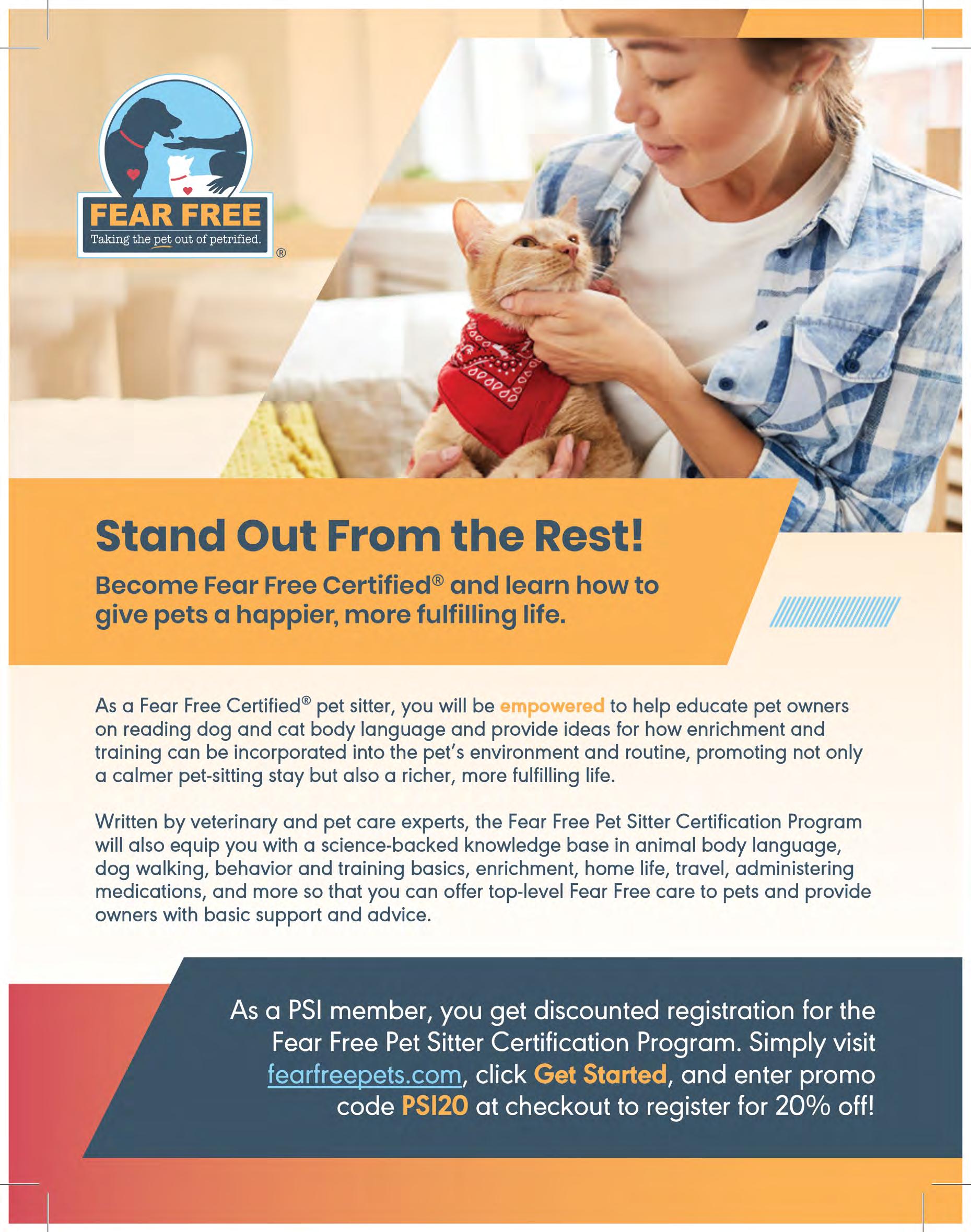
PSI MEMBER SPOTLIGHT: Kyle Morse, Simply Yours Concierge
By Meghann Evans, PSI Education & Outreach Manager
When PSI member Kyle Morse started his pet-sitting and dog-walking business in November of 2015, he outlined on a notepad with his dad various revenue scenarios—if he had “x” number of visits per week, it would bring in “x” amount of revenue, and so on.
“Back then we thought we were going to be pretty happy with 50 visits a week,” Kyle recalls.
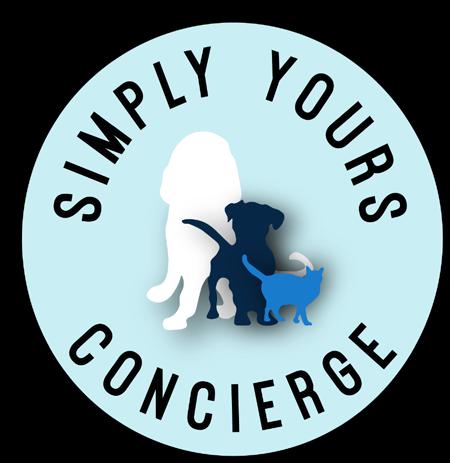
For the first year to year-and-a-half of business, Kyle was a one-man team. He completed all of the dog walks and cat visits himself, marketed the business, met with potential clients, and the list went on.
But Kyle is a born entrepreneur, and his business wouldn’t stay small for long. Fast forward to 2022 and his pet-care business, Simply Yours Concierge, is much larger than his initial target.
“Now it’s close to 300 visits a week,” Kyle says. “It’s pretty incredible.”
He started hiring team members in 2017 to help cover a one-county service area in his home state of

New Jersey, and now he has a 35-member team servicing a client list of about 600 pet parents, covering four counties.
“It’s really a testament to my community—the needs of the community,” Kyle says, explaining that there are a lot of people there, and a lot of those people have a need for pet-sitting services.
“And it’s also a testament to…wanting to grow and wanting to find more business and hire more staff,” Kyle adds.
Originally, he envisioned Simply Yours Concierge as an errands service, but as he received more and more pet-care requests, he transitioned to focus exclusively on
dog-walking and pet-sitting services. And as a lifelong pet owner, it was a natural fit.
Entrepreneurial spirit
Kyle grew up in the central New Jersey area of South Brunswick, where his pet-care business is now based. He majored in history and political science at Rutgers University-New Brunswick— completely different tracks from his current career, he notes—and graduated in 2014.
For a few years he worked random jobs, from retail to real estate. When his job as a real estate appraiser ended, he decided to reassess his career, and the pet-care business was born. He did his research— utilizing industry ebooks, such as

an ebook from Kristin Morrison about how to start a dog-walking company—and joined PSI.
Simply Yours Concierge isn’t Kyle’s first business, though. In college, he started a business replacing cracked iPhone screens.
“I had in my head that I love business and I love being an entrepreneur, but you never really know what’s going to happen until you start something and you see how it’s going to go,” Kyle says of his pet-sitting endeavor.
Now, he owns three companies— real estate properties, an e-commerce website, and his petcare business.
As a business owner who is hearing impaired, Kyle is able to customize his procedures to meet his needs, communicating with clients via email or text.
Tip for success: For other pet sitters who are hearing impaired, Kyle offers this advice: “Be transparent. Tell people. If there’s a client or somebody else who’s speaking to you, whether you’re at a meeting or whether you’re speaking to them on the phone, tell them, ‘Hey, I’m (hearing impaired). This is how I can communicate with you. I hope you understand.’ Be transparent and don’t be afraid to text or email and have somebody else make phone calls for you.”
Kyle explains that if he has a client who insists on a phone call, he has his supervisor call them. At meetings, if a client is not looking at him, he asks them to look at him so he can read their lips.
With the growth of his business, Kyle no longer covers pet-sitting visits but focuses on the management side of the business. In addition to
various sitters, his team includes a supervisor who goes to new client meetings, covers last-minute visits, etc.
Focus on the web
To grow his business, Kyle says some of the traditional marketing strategies, such as live events, aren’t where he has gained new clients. His website, www.simplyyoursconcierge.com, has been the key. “The biggest thing for me has been SEO and search engine optimization,” Kyle says. “Making my web presence has really dominated my client acquisition.”
Tip for success: Kyle advises pet sitters: “Make your website as optimized as possible for Google to find you—and specifically Google. So what that means is writing down the townships and the zip codes that you service on the website; talking about your services a lot and having specific keywords; and then being active—somewhat active—posting on a blog, and every time you post a new blog mentioning the townships and the zip codes again.”
His business has built up quite the reputation in his region, and social proof has been a big part of that, with Simply Yours Concierge garnering about 150 five-star Google reviews over the past several years.
So how did he get all of those clients to leave reviews?
“I just asked them,” Kyle says with a smile. “I’ll ask them, ‘hey, can you do this,’ and then if they don’t respond they don’t respond. But I would say on average probably 40% of the people I ask leave a review. I’m grateful.”
Like other businesses, Simply Yours Concierge faced circumstances out of their control in 2020, taking a hit due to the pandemic.
“It was awful,” Kyle says, adding that business was down 90%. They went from about 200 walks a week to 10, and his team of staff went from about 20 down to five.
That steep decline in business lasted for about six months, then gradually business began to build back up, and his number of team members began to build back up as well. September 2021 is when business really started picking up, and for the past six to eight months business has been growing steadily each month.
“Now I can’t keep up,” Kyle says. “I’m constantly trying to hire new people.”
A solid team To grow your business, you need to have the right team in place, and Kyle says he only uses one thing for recruiting: indeed.com He utilizes the free job posting feature and says it takes him anywhere from five days to three weeks to find a new team member.
Kyle is transparent about the challenge pet-sitting business owners face in retaining staff sitters: it isn’t the most high-paying job.
“But it is one of the most fulfilling and rewarding jobs out there that you could ever have,” he says
Tip for success: “When you are hiring, hire the ones who seem like they’re genuine,” Kyle advises. “Hire the ones who seem like they’re genuine and then the rest will fill out itself.”
He has some staff members who have been around for five years, and others who only pet sit for the company for five months.
“All you can do is just try and hire the most genuine and reliable pet lovers out there,” Kyle says.
With three companies, Kyle certainly has a full plate, so it is important for
him to delegate tasks, and to take advantage of the flexibility he has as a business owner to set his own schedule.
Tip for success: Kyle says it is so important for pet-sitting business owners to “delegate, delegate, delegate,” and to make sure you “do take that time (off) for your mental health.”
Pet-sitter scheduling software is one business tool that has been invaluable for Kyle. He is able to access client information, his company schedule, staff information, and more to run his business smoothly, and he can “change things in a flash.”
Reliable, professional service
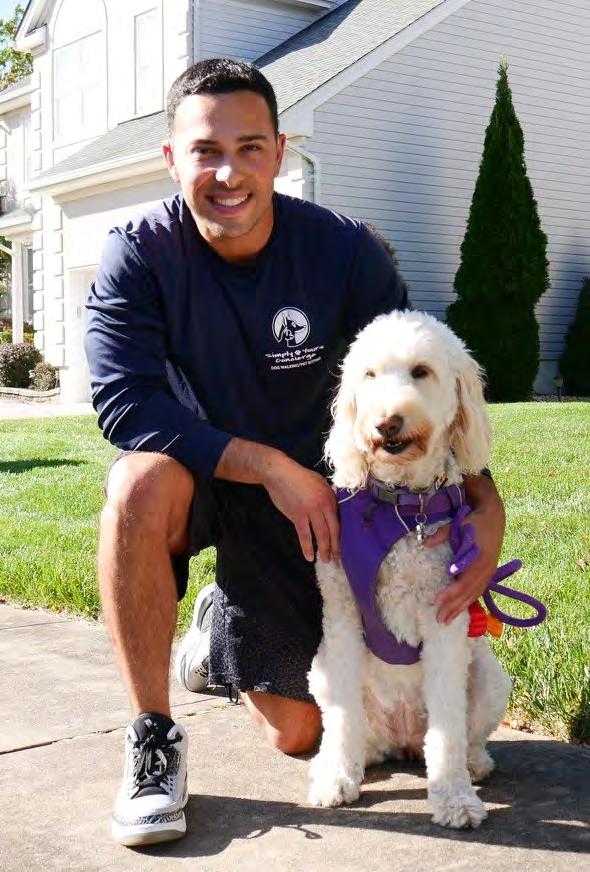
Kyle wants to keep growing Simply Yours Concierge so his company can “help as many people as we can.”
“I’m very, very grateful for all my clients. I love all of them,” Kyle says. “I’m so thankful that so many of them supported us through the pandemic and today. I only want to keep helping them.”
Kyle says there are “many, many different ways you can be a pet sitter,” but first and foremost, he believes it is important to “be professional and be reliable.”
He says his customer service is the thing that makes his business stand out.
“I am just always available and there to be asked questions, scheduling anything you need, last-minute requests,” Kyle says. “I am always there for my clients.”
Tip for success: For pet sitters looking to elevate their customer service, Kyle offers this advice: “Be responsive, but when you’re responsive, be professional. There’s going to be some wacky people out there, but if you respond quickly and respond professionally, you can’t go wrong.”
Kyle wants customers to associate the words “reliability,” “kindness,” and “professional” with his business.
And those are some of the words you will see if you read the five-star Google reviews for Simply Yours Concierge—reviews that reflect the growth and success Kyle’s business is seeing.
“It’s really incredible. I never, ever would’ve imagined it,” Kyle says. “Not only myself, but my staff—we work very, very hard and we do our utmost to provide impeccable petcare services.”
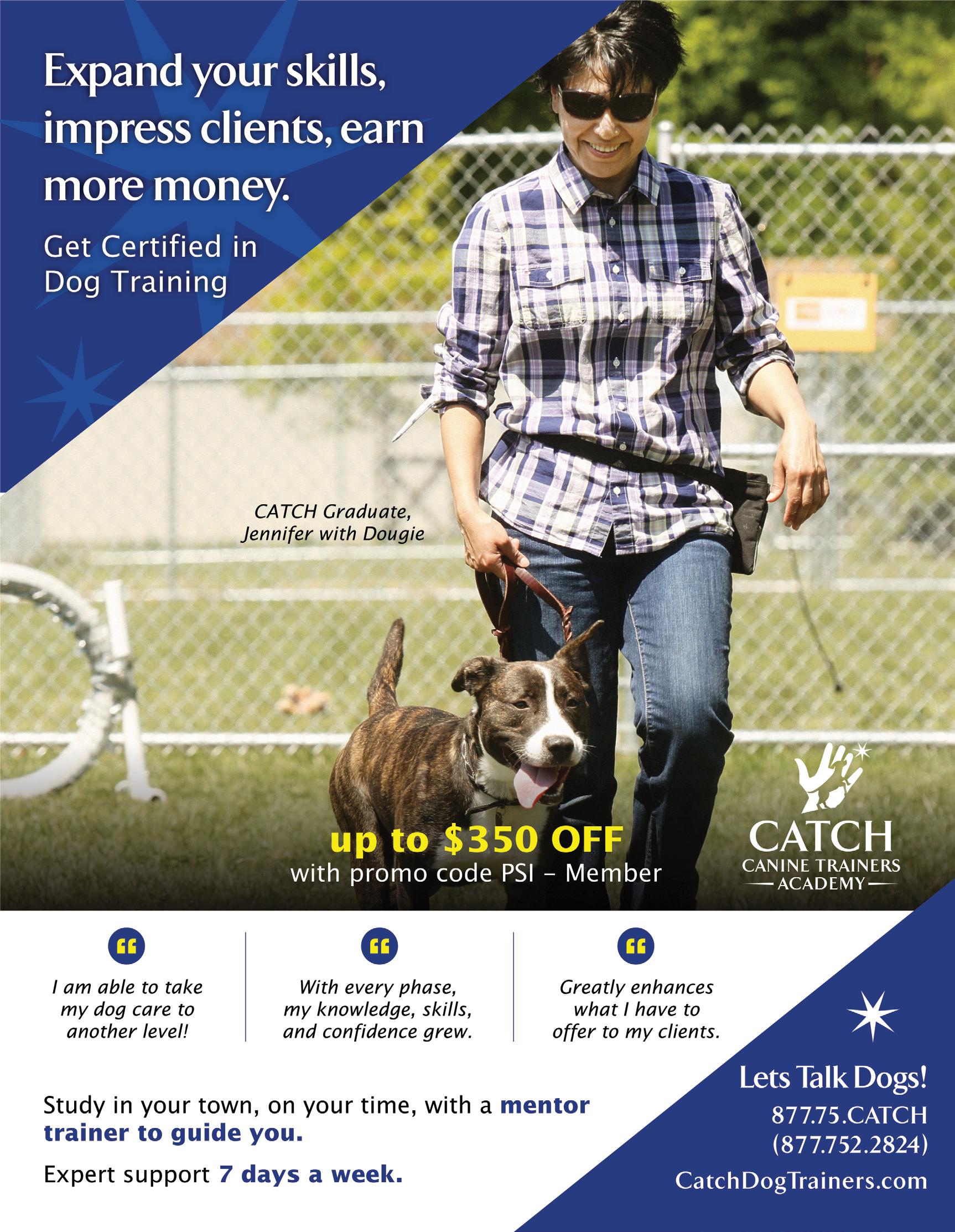





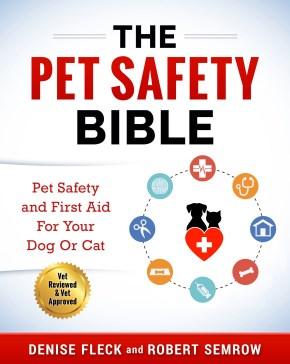
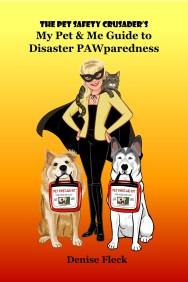

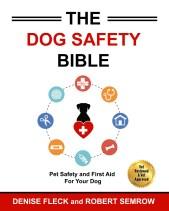
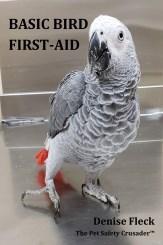
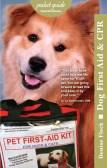
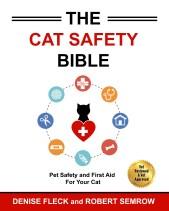




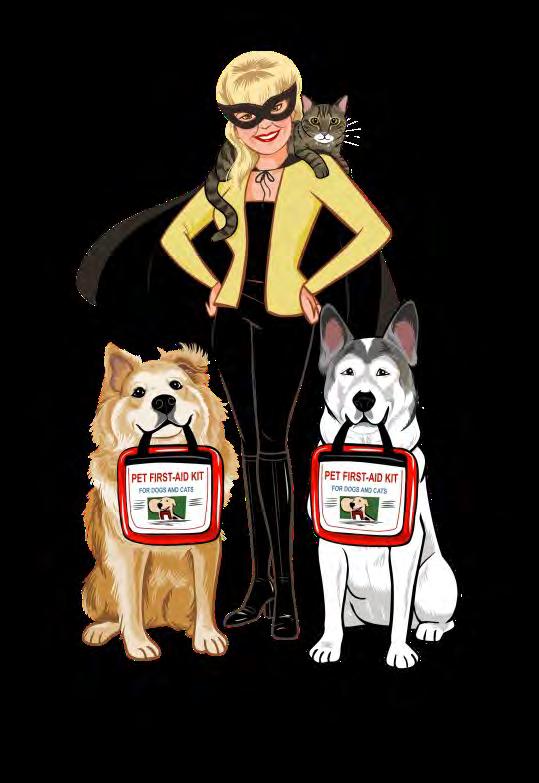
Does Your Company Send Out a Newsletter? If not, now’s the time to consider it!
By Beth Stultz-Hairston, PSI President
According to PSI’s latest State of the Industry Survey, 71% of PSI pet sitters use Facebook to promote their pet-care businesses and 41% indicated they use Instagram to advertise their services. But only 14% indicated their company published a company newsletter (13% sent an e-newsletter by email and 1% printed a newsletter to mail or leave-behind for clients).
Looking at this data, you may be thinking, “Newsletters must not be that important.” But consider this: What would you do if you suddenly didn’t have access to Facebook or Instagram?
We’ve heard from members who have been locked out of their business accounts, had their pages disappear or had their accounts hacked. In addition to these possible issues, the fact is that none of us owns Facebook or Instagram, and we also can’t control their algorithms.

thought to your specific audience and what type of information will benefit them. The good news is that you know your clients! You know their pets (and any special concerns), you know their travel habits, you know their work habits, etc. This “inside information” can help you determine what content to include in your newsletter that will make your audience actually want to read what you’re sending! Remember, while your ultimate goal with your e-newsletter may be to increase your business, the primary focus of your emails should be to provide information that will benefit your audience!
Should you use social media to promote your pet-care business and engage with your clients? Absolutely! Should you put all your eggs in that basket? Absolutely not!
Gathering client (and prospective client) email addresses allows you to build a marketing list that you maintain—and allows you to control the information you send to them.
Best practices for your e-newsletter
Creating and sending a regular e-newsletter to your email list offers a great opportunity to stay top of mind with local pet parents, provide valuable pet information (which helps establish you as a trusted resource) and promote your services.
Before you send out your first email, though, keep these best practices in mind:
Determine your audience. Will you send your newsletter to clients only, or will prospective clients be able to sign up to receive your newsletter as well? You also want to give
Pick a schedule and stick with it. As a pet sitter or dog walker, you are dependable and consistent. Your newsletter should be the same! Whether you decide to send your newsletter weekly, monthly, or quarterly, pick a publication schedule and stick with it. Your clients should know when to expect your newsletter. For example, PSI’s e-news to members goes out every Monday morning. Establishing a consistent e-newsletter schedule ensures your clients know when to expect communications from you—and helps you better plan your workload!
Focus on worthwhile content. While you may be tempted to just pull together a list of pet-related articles you find online for your e-newsletter, it’s important to be intentional about what you choose to include in your emails. During her session at PSI’s recent 2022 FOCUS One-Day Online Summit for Pet Sitters and Dog Walkers, Tori Mistick explained that your content should fit into one of four categories—it should educate, entertain, engage, or inspire. She also reminded participants that the copy they use (for e-newsletters, social-media captions, etc.) should help increase their “like, know, trust factor” with their audience. Remember, too, that your newsletter shouldn’t simply be a sales pitch. Many experts recommend the 90/10 rule, which means that only 10% of your communication should be promoting your business; the other 90% should be educational for your audience. It’s also important to proofread to ensure your content is as error-free as possible. You don’t want spelling or grammar errors to distract your audience from the great information you’re sharing!

How to Increase Your Search Ranking in Google Organically
By Erika Godwin, Barketing Solutions
One of the most misunderstood aspects of search engine optimization (SEO) is understanding the difference between Organic Search Results and the Local Pack. Organic search results are primarily based on website optimization, while Local Pack is weighted heavily on searchers’ proximity and reviews. Therefore, Google uses different algorithms to serve search results for each. Many businesses believe their website has good SEO because they rank well in the Local Pack, but this can be a damaging misconception.
The thing is, falsely believing your website is performing well because of your Local Pack listing may have you putting on-page website optimization on the back burner, which may have a detrimental impact on retaining your Local Pack ranking and hurting your organic SEO.
These algorithms have and will continue to change over the years, so staying up to date is essential. Understanding the top ranking factors of both is crucial to improving your business’s chances of improving and/or retaining your rankings. Below we review the top three factors for Google Business Profile and Organic Search Results.
Top 3 Ranking Factors for Google Business Profile Local Pack (formerly Google My Business)
1. Google Business Profile (36%)
The factors to focus on in your profile include:
• Your primary category
• Proximity of address to the point of search
• Use of keywords in the business name (If you don’t have keywords in your business name, then you cannot use them in the title without violating Google TOS and risk suspension.)
• Use of other relevant categories.
• Completing, updating, and verifying profile
There are certain GBP factors that you don’t have much control over, like searchers’ proximity to your location. The best you can do is ensure your Google Business Profile is complete by filling out all relevant information and continuing to add photos and publish
new posts. If you are unsure, invest in a Google Business Profile Action Plan
This data from Google highlights how vital an optimized GBP is: “Customers are 70% more likely to visit and 50% more likely to consider purchasing from businesses with a complete Business Profile.”
2. Reviews (17%)
The significance of Google Reviews continues to climb each year and has consistently been the 2nd most important ranking factor in the Local Pack since 2018. As this trend grows, it becomes increasingly important to create a process for asking your clients for reviews after services are performed and responding to those reviews.
Google Reviews will help you grow your business’s overall reputation and rankings. Bonus if you can get your clients to use main service/location keywords within their native reviews.
Google isn’t the only place where you should be requesting reviews. Third-party review sites like Yelp!, Facebook and Nextdoor can also impact search rankings and increase your reach.
3. On-page (16%)
On-page signals come from your website and are vital for local and traditional SEO. On-page has been consistently crucial since 2013. Factors include:
• The volume of quality content on a site
• “NAP” (which stands for Name, Address, Phone number).
• Topical keyword relevance across the website
• Title tags and location-specific keywords
• Dedicated pages for local content (service area pages and blog posts)
• Domain authority
Keyword research is essential for onpage optimization, so you focus on the highest potential keywords for your
business type, location, competition, and target audience. On-page optimization helps improve your credibility and reputation with Google.
For additional factors, check out this Bright Local article
Top 3 Ranking Factors for Local Organic Search
1. On-page (34%)
On-page optimization is the only ranking factor in the top 3 of both Local Organic Search and Local Pack; therefore, it must be prioritized.
To further increase your local authority with Google, in addition to creating dedicated location pages for local content, you will need to mention your locations within your blog posts frequently. Publishing high-quality local blog posts at least once per month is crucial, especially in local cities with high search competition. If you are not currently writing local blog posts, you will need to get started to improve or even retain your ranking.
2. Links (31%)
Links are when other websites’ inbound links point back to your website and can include internal anchor text. Earning these high-quality backlinks can be challenging and time-consuming but essential to building your website’s authority. The more quality links, high authority links, and relevant keywords in anchor text pointing to your website, the more likely your site will make gains in search engines.
Getting your business listed in local and industry-related directories, like Pet Sitters International, helps build your website’s authority. Getting mentioned in the news (local or national) and other localrelated high-authority websites can also help your rankings. It is important to remember that you should never pay for links, and not
all links are good. Bad backlinks can actually harm your website.
3. Behavioral (11%)
Behavioral signals are actions taken by the searcher like click-through rate, mobile clicks to call, and dwell time (the time a searcher takes analyzing a web page before clicking back to search results). To improve these behavioral signals, take the time to optimize your GBP profile and website for user experience like usability, title tags and meta descriptions, post content, etc.
Make sure both your website and Google listing clearly display valuable information that is as coherent as possible to encourage conversions and improve your rankings.
For additional factors, check out this Bright Local article.
In Conclusion
There is no guaranteed path to SEO success, and every business will have a different journey depending on many factors, including local competition. We’ve covered the top three factors for Google Business Profile and Organic Search, but many more factors can impact your SEO results. Some other significant ranking factors include citations (location data, IYP [Internet Yellow Pages/aggregator NAP consistency] and citation volume), personalization signals (search history, search location, and device) and more.
SEO is an ongoing process that requires continuous research/ analysis and effort driving traffic to your website, creating high-quality, relevant content and adjusting your strategy as you go. A modern, well-optimized website with a solid Google Business Profile Action Plan is an excellent recipe for SEO success!
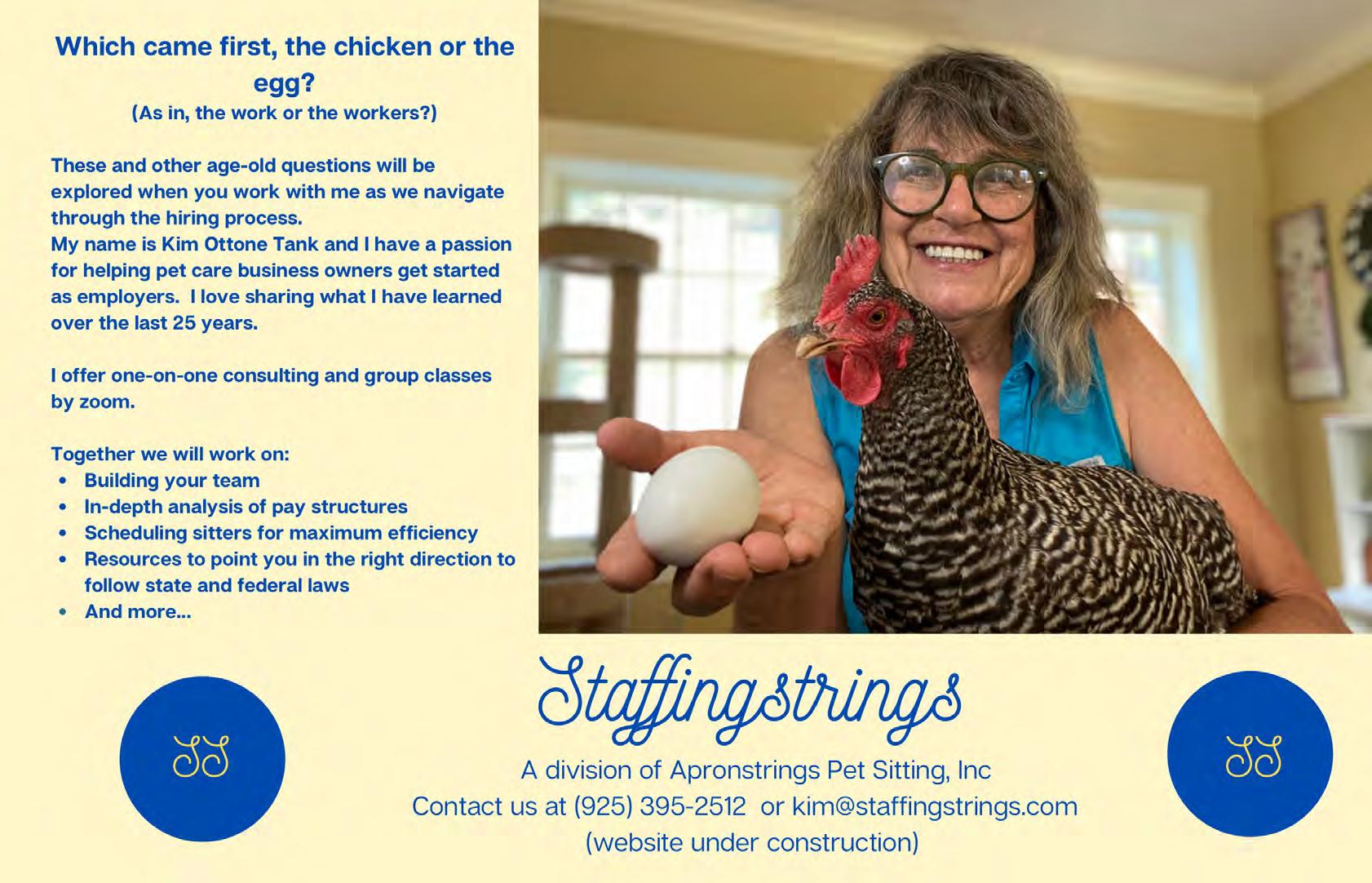
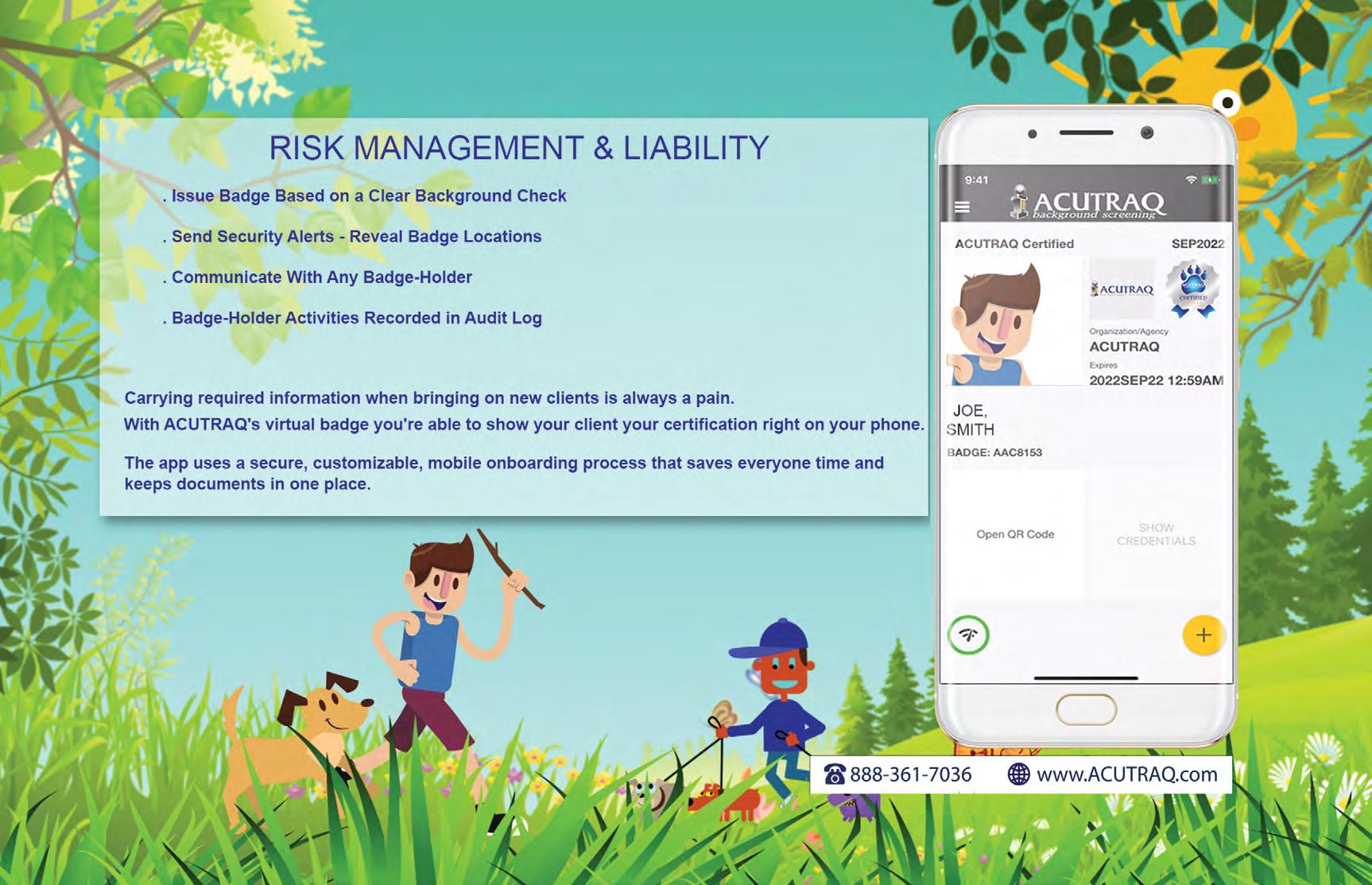
Finding Your “Sole” Mate
Shoe selection advice from
the experts
You spend a lot of time on your feet, so finding the most comfortable, supportive shoe is very important. So, we reached out to the experts for advice to help you find your “sole” mate.
Certified climbing trainer, mountaineer and guide with Outforia, Jennifer Schultz, offers these recommendations for selecting the perfect shoe:
“If you are walking long distances over varied terrain, you will want two things: arch support and cushioning. Arch support should cradle your feet in their natural curvature rather than forcing a deep arch but provide enough support that your feet aren’t flat.
I recommend shoes with gel or memory foam for shock absorption, especially if you find yourself walking on a lot of pavement. Just like your dog clients need the soft, cushioned pads of their paws, you need soft cushioning for your feet!
Also, make sure that your shoes fit from the start. It is a big mistake to get shoes that have tight spots and convince yourself you’ll ‘break them in.’ That just isn’t the case, and will only result in blisters, bruised toenails and ultimately less income for you as a dog walker.”
John Fawkes, an NSCA-certified personal trainer and Precision Nutrition-certified nutritional counselor, shares this additional advice:
“Studies show that dog walkers walk roughly 21 miles per week. Consider a dog walker/pet sitter
and we’re looking at a tremendous amount of time on one’s feet.
While this is fantastic in terms of maintaining a healthy weight and keeping one’s heart strong, it can also do a number on one’s feet.
Fit is one of the biggest concerns dog walkers should take into consideration when purchasing walking shoes, but they may want to take it a step above and get a foot analysis.
Foot analyses not only help people find the right fit but also determine the topography and pressure points in the foot. In other words, these examinations ‘map’ out your foot to determine the sort of support you need to protect your feet.
Should you decide to explore this option, be sure to go with a certified pedorthist. Also, do know that Foot Solutions offers this assessment.”
Have you found the perfect shoes for walking dogs all day? Let us know! Email info@petsit.com with subject line: Shoe Recommendation, and we’ll share suggestions in a future publication. —PSI Staff
Watching out for Lyme disease
Lyme disease—it’s a diagnosis that no pet sitter wants to hear. But as service providers who are frequently outdoors, all pet sitters and dog walkers should be aware of the symptoms of Lyme disease as well as precautions to take.
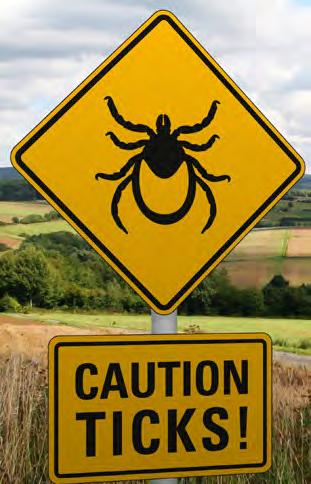
The culprit for Lyme disease is the bacterium Borrelia burgdorferi, the Centers for Disease Control and Prevention says, and the disease is transmitted to people through the bite of infected blacklegged ticks (also known as deer ticks). According to WebMD, some common symptoms include a skin rash known as erythema migrans and flu-like symptoms such as headache, fever, fatigue, chills, swollen lymph nodes, muscle aches and joint pain.
While most cases of Lyme disease can be treated successfully with antibiotics if caught early, the infection can spread to the heart, joints and nervous system if left untreated, the CDC says. Be sure to seek medical attention if you think you may have been bitten by a tick.
Fortunately, you can take some simple precautions year-round to try to prevent Lyme disease, such as using insect repellent that contains DEET, checking your skin after being outdoors (especially after walking in the woods or tall grass), and promptly removing any ticks with fine-tipped tweezers.
It is also possible for your furry clients to be infected as well, so check their coats and skin regularly. According to PetMD, about 5-10 percent of dogs with Lyme disease become ill, with recurrent lameness due to joint inflammation as a common symptom. Dogs may experience other symptoms like lack of appetite and depression, and some may develop serious complications such as kidney problems (or rarely, heart and nervous system complications). Veterinarians may choose to treat dogs with antibiotics. Lyme disease is uncommon in cats, though possible. —Meghann Evans, PSI
Do I really need a service contract?
By Casey Parker, PSI Membership Manager

Yes—that’s the short answer. You absolutely do need a service contract! If you already have one, you’re in good company…PSI’s 2022 State of the Industry Survey results revealed that 83% of our respondents use a service contract for their pet-sitting business.
We still hear from pet sitters who are nervous about using a service contract and despite how adamant PSI has always been that this is a necessary part of doing business professionally, we truly understand. If you’re accustomed to doing business informally (and we know that many of you began your business that way), the transition to formalizing things with a written agreement seems cold, formal, and daunting—not at all what you want your relationship with clients to be like. But we can help you to reframe that mindset and even give you some tips on communicating your contract to your clients easily and effectively.
Finding the right contract for your business
Your first step is to get a service contract for your business if you don’t already have one. If you are unsure of what to include in your service contract, PSI’s blog post “Your pet-sitting contract: 6 items you should include” is a great resource. All the items mentioned are already included
in PSI’s Pet Sitting Service Contract and Dog Walking Service Contract, so if you have purchased one or both of these downloadable forms, then you are already off to an excellent start.
For those of you who already have an agreement, remember that your contract is only as good as it is accurate. It’s important to review your contract regularly to make sure that it is reflecting the most up-to-date information about your business. If you have had your service contract for several years without review, let this be your sign to have an attorney look over it for you. Local laws change and you do not want your contract to be rendered void because of old language that is no longer applicable. Make it a point to review all your business materials (contract included) each year. This will save you time and headaches in the long run and create a streamlined onboarding process for your clients.
Explaining your contract to clients
Now that you have your contract and you are confident that it is accurate and in accordance with local laws and the policies that you have set for your business, your next step is to practice introducing this agreement to your
clients. Practicing how you will introduce your contract at your initial consultation gives you the opportunity to get comfortable and build confidence. Very few people can approach something flawlessly the first few times they do it, which is why practicing by yourself or with a business partner, a fellow pet sitter, or a friend can ease any nervousness and help you streamline what you say and how you say it.
What you say and how you say it matters. If you discuss your contract like it’s a headache or an inconvenience or even like you’re not sure you should have one, this attitude is relayed to your clients, and they will likely approach it the same way. Your service contract or agreement is your first line of defense in the event of a dispute regarding your services. It clearly outlines what you the pet sitter have promised to provide, along with what your client has agreed to in order to retain your services. We never want there to be disagreements or complaints about the service that you provide, but it is far better to be prepared and have clear, concise documentation of your agreement and terms of service.
Your agreement should be viewed as a protective measure and an opportunity to discuss your policies, your company’s standards for pet care, and the client’s expectations. A good example of this is a section in PSI’s Pet Sitting Service Contract that explains that the pet sitter is allowed to use their best judgement in the event of an emergency or disaster. The unexpected can happen and reviewing this section with your clients gives them an opportunity to make an emergency contact known to you and allows you to review your company’s plans for dealing with these types of situations so that your clients can be confident and secure in leaving their pets and home in your care.
While your service agreement plainly benefits you and your business, it is also a benefit to your clients, and you can communicate it that way. If a client questions why you need a service agreement, you can explain that this agreement not only has sections for the care of their home and their pets, but also includes space for their instructions in the event of an emergency. Your agreement should have a section where your clients are able to authorize veterinary care and explain any limitations to that care (e.g., euthanasia) if you are unable to reach them during their travels. The very nature of an emergency is that it is unexpected, but a pet sitter must always hope for the best and be prepared for the worst, making a service contract or agreement a must-have tool for the success of your business.
Cat Scratch DISEASE
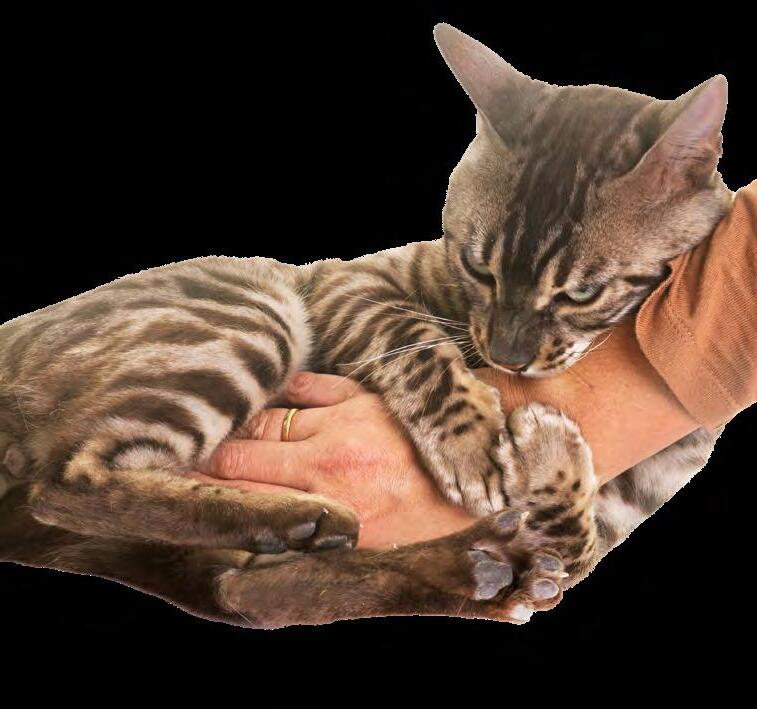
What you need to know
If you’ve been pet sitting for any length of time, you’ve likely come across a feisty feline at least once! Even experienced pet sitters can suffer cat bites and scratches. Should you be worried about Cat Scratch Fever, also known as Cat Scratch Disease (CSD), if this happens?
You can never be too careful! A three-year study conducted by the Mayo Clinic found that middle-aged women are the most common cat-bite victims, and 1 in 3 patients bitten on the hand by a cat had to be hospitalized.
The Centers for Disease Control and Prevention (CDC) explains that CSD is caused by the bacterium Bartonella henselae Cats can become infected with B. henselae from flea bites and flea dirt, or fighting with other cats that are infected. The disease can spread to humans when a cat licks a person’s open wound or bites or scratches a person hard enough to break the skin.
A mild infection can occur around the cut or bite approximately 3-14 days after it occurs. The infected area may be red, appear swollen and feel warm or painful. Initial symptoms may also include fever, swollen lymph nodes, and headache, among others.
If you display any of these symptoms after a cat bite or scratch (or after a cat licking your open wound), contact your doctor immediately. —PSI Staff
Reaching Prospective Clients with Both Four-and Two-Legged Children
Recently, during PSI’s 2022 FOCUS OneDay Online Summit for Pet Sitters and Dog Walkers, I shared that according to PSI’s 2022 State of the Industry Survey, the majority of pet sitters’ clients are couples, and there are more couples with children (37.3%) than couples without children (36.8%).
While the percentage difference between these two groups may seem negligible, it is indicative of a somewhat surprising change—and a significant departure from our most recent survey before this one. In 2020, couples without children were the most common client type, making up 43.7% of pet sitters’ client base on average.
If you are looking to grow your company’s client base, this is a data point/trend to take note of. As a PSI member, you have access to PSI’s Early Education Program materials in the Members Area of petsit. com.
We’ve had these program resources available to members for several years as we’ve been keeping an eye on this client demographic of clients with children—so if this is not a segment of pet parents that you have really focused on marketing to before, our Early Education materials will be an easy way to just dip your toes in the water of reaching out to potential clients with both four-and two-legged children.
Putting PSI’s Early Education Program Materials to Work for Your Business
As a business owner, you probably look for ways to give back to your community, as well as ways to raise awareness about your pet-sitting business. Using PSI’s Early Education Program materials you can do just that, while promoting responsible pet ownership (and the idea of professional pet sitting as a career) to local children through school programs and other outreach efforts.
In the Early Education Program section of the PSI website, you can download these materials:
• Customizable coloring and activity book
• Creating a butterfly garden information sheet
• Pollination activity sheet
• Pollination word search
COLORING AND ACTIVITYBOOK
DID YOU KNOW?



Each download can be edited to add your business name and contact information before printing.




But once you’ve printed the materials, how do you get them in the hands of children? This is an important step! By introducing your business to children and providing them with educational information, you can also reach their parents, as most kids will take the materials home with them.
Consider these ideas to distribute the materials:
Volunteer to be a guest reader at a school. Many elementary schools look for volunteer readers throughout the year, and in the U.S., Read Across America Day in March is a great opportunity to offer to volunteer. When I’m a guest reader at a school, I always bring some of the Early


Education Program coloring pages to pass out to the children after I read a pet-related book. Don’t forget to add your business contact information to the coloring sheets!
Participate in a school’s career day. School career days give you an opportunity to share the Early Education materials and to also educate kids about your job and explain how pet sitters help pets (and their people). If you aren’t sure if your local schools host career days, reach out to the school’s guidance counselor to find out and offer to be a resource. Some schools host in-person career days/fairs and some use Zoom or similar platforms.
Keep kids in mind when you have booth space at events. When you participate in events, have a booth that attracts
children. Have your customized coloring and activity sheets prominently displayed on your table to attract families with kids. I’ve also found that a DIY photo booth is a big draw for families with children. Set up a simple backdrop and pet-related photo props (think dog and cat masks or ears, etc.). You can take photos with your cellphone, provide your business card and let the families know that you’ll upload the event photos to your company’s Facebook or Instagram.
Donate coloring sheets (and crayons) to local restaurants. This is a great way to reach families with children, and to also partner with another local business and build your relationships in the community. While chain restaurants likely already have coloring sheets (or branded materials to give to children), locally owned restaurants likely don’t. You can donate coloring sheets and crayons that they can provide to patrons with children who dine in (or include them with takeout orders that include kid’s meals).
Have you participated in the PSI Early Education Program? Contact us to share photos and details on your participation. —Beth Stultz-Hairston, PSI

PSI Member Roundtable: Networking with other local pet sitters
While your work is focused on pets, the people you surround yourself with can have a huge impact on your business! Building relationships with other pet sitters and dog walkers in your local area is so important, but not always easy.
For this PSI Member Roundtable, we’re focused on networking with other local pet sitters—how to get started, how to refer your clients, and how to deal with unethical sitters.
While we could only include a handful of responses, we appreciate everyone who submitted responses for these questions. Be on the lookout for PSI Member Roundtable questions for future articles that we’ll be sharing in PSI’s Professional Pet Sitters Chat.
Meet our Member Roundtable Participants:

Steph Savy Steph’s Pet Sitting Media, Pennsylvania

Mehgan Cash Marathon Mutts Pet Services Pensacola, Florida
How have you grown your network of other local pet sitters?
Steph: Years ago I was in a group of local pet sitters that would get together for lunch or dinner occasionally. Everyone ended up getting too busy, so we stopped. Then I found another regional group through PSI and got to know some really great sitters. I also routinely text and email with sitters that are closer to me about different pet-care issues and clients that we are unable to service, etc.
Mehgan: It started with noticing other sitters commenting in neighborhood/local FB groups when people would ask for pet sitters. Another independent sitter and I reached out to each other and met for coffee, and it turns out we have a lot in common. Since then, I’ve reached out to other sitters (some with staff and some independent like me), and I started a local private Facebook group for


professional sitters only (no Rover or Wag sitters, in order to keep track of insured sitters for potential referrals and help). The group has grown to 18 people, and we now have monthly in-person meetups as we are able. Since not all of us can easily meet in person because of differing schedules, I have Accountability Friday posts, where everyone is required to answer at least 3 questions a month to stay in the group. These posts are meant to help us get to know each other’s personalities and business practices better so that we know whom we may be potentially sharing clients with, if needed.
K.C.: For growing our network of other local pet sitters and businesses, it started off calling around when we first opened to let other pet-care businesses know who we are and what we offer. From there, it was up to them if they wanted to add us to their referral network. As we grew, we then became one of the companies other companies
K.C. Heitchue Fur Baby Comfort & Care Highland, Michigan
Jan Brown Jan’s Pet Sitting Foster City, California
reached out to inquire about our referral network. It all comes down to whether you view other businesses as a referral network or competition—and viewing others as a referral network instead of competition has benefited us immensely.
Jan: Many, many years ago, before Facebook, before Yahoo, we went through the “Yellow Pages” and called the sitters inviting them to pizza and beer. That’s how we got started. From there we meet periodically but through the years (and COVID!) we have not met as frequently.
If you were to suspect (or find out) that another local pet sitter may be misrepresenting their credentials (e.g., saying they are insured when they’re not, etc.), what would you do? Do you reach out to the pet sitter, let other local pet professionals and/or pet parents know?
Steph: I do not. I try to focus all of my attention on my business. Sitters that misrepresent themselves will eventually be found out. It’s bad business and bad karma!
Mehgan: There’s actually a member in my group who one of my clients had a bad experience with, though I only learned about it through him after this sitter had been in my group for quite some time. It’s why I started the accountability posts, as I realized I don’t know enough about these other sitters other than knowing they’re insured and licensed. This client had a “ghosting” experience with this other sitter, to the point of worrying about his animal. When he attempted to confront her, he never heard back. So that led me to NOT refer to anyone I haven’t personally gotten to know, and I’ve also cautioned my other go-to back-up referral sitter (the one I first got to know) against using her until we learn more about her. I’m not happy about my client’s feedback about this sitter, but I feel like I want to hear her side too, without directly asking her.
K.C.: If a pet sitter or business reaches out to me to network together, I inquire on their credentials and will ask questions to obtain if it’s accurate or not. I will not include anyone on our referral list unless their credentials are up to date.
Jan: When we met more regularly, each year all members had to show me proof of liability insurance and bonding every year. I never checked for pet first aid cer-
What wouldYOUdo?
tification. If someone is bonded and insured, you have to hope they are not misrepresenting they are trained in pet first aid. I am also a pet first aid instructor, so many of our member also took the training from me, so it was not really an issue.
Do you refer clients you can’t accommodate to other local pet sitters? If so, how did you decide which pet sitters to refer to, and do you have an official arrangement (a referral fee, etc.), or do you just informally recommend them?
Steph: Yes, I have a handful of sitters that I personally know that I refer clients that we can’t service to. It’s very informal, there is no exchange of money. I feel that it builds trust which is invaluable!
Mehgan: Absolutely. That is the main purpose of the group I started. I have 2 or 3 independent sitters I’ll refer to, depending on the potential client’s needs (overnights vs. drop-ins, for instance). These are sitters I’ve used personally for my own pets, and I have learned that I can trust them completely. They also refer to me and have learned that I am honest, ethical, and transparent. We now share a few mutual clients, filling in for each other when the other isn’t available or when we are taking our own vacations. It’s been wonderfully helpful. We do not charge referral fees; we explain to the clients that we all have our own pricing and contracts and are not affiliated other than generally trusting each other with each other’s clients. It’s worked out very well so far (just over a year of doing this).
K.C.: There’s enough pets to go around and we can’t handle all the requests! We have a long referral list to provide to our clients in the event we are not available for their request. It’s all informal as it’s usually reciprocated back from the other businesses when they don’t have availability. A few businesses in our network have provided “kickbacks” here and there such as gift-cards which I am always grateful for!
Jan: I just refer them to our network group’s website. I will sometimes refer them to a particular pet sitter, if I think the sitter offers what the client needs. But it is easier to refer them to the group’s website. I have never charged for referrals. What goes around, comes around!


Mark Your Calendar for These Upcoming Free Member Webinars!
Staying Safe While Working with Dogs
May 18 • 3 p.m.
Presenter: Jessica Davis, BS, CBCC-KA, CPDT-KA
During this free member webinar, Certified Dog Trainer Jessica Davis will cover basic body language, explain how properly engage borderline dogs, and share defensive handling techniques to keep you safe while in client’s home.
Ask Dr. Donita: Your
Veterinary Questions Answered
August 17 • 3 p.m.
Presenter: Dr. Donita McCants, DVM
In this free member webinar, PSI is hosting a Q&A with Donita McCants, DVM. She is a Fear-Free Certified veterinarian based in Orlando who regularly shares veterinary advice on her “Ask Dr. Donita” social-media pages—and during this webinar, she’ll be answering questions submitted by PSI members. Topics covered will included warning signs that a pet you’re caring for needs immediate veterinary care, what vaccinations are needed, and more!

Proven Pet Business Principles

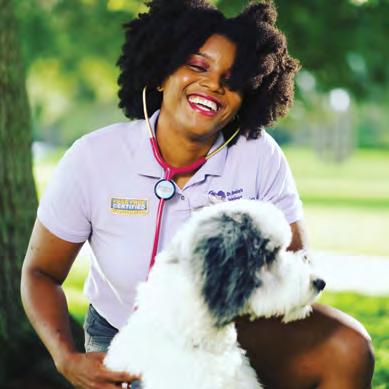

from PSI Founder Patti J. Moran
This tip isn’t specific to our industry, but it’s an important one to keep in mind if you are hiring staff. I’ve read recently about the growing trend of job candidates ghosting potential employers, but candidates also report that they have been ghosted by employers—receiving no update, even after multiple rounds of interviews!
Visit petsit.com/psi-webinars to register for these webinars. Webinars are free to members, but pre-registration is required. All member webinars are recorded for on-demand viewing, and the on-demand recordings of PSI’s 2021-22 free member webinars include closedcaptioning and/or transcripts.

PSI’s 2022 free member webinar series is sponsored by Business Insurers of the Carolinas, www.psi-ins.com. Certified Professional Pet Sitters earn up to 2 CEUs per webinar.
The hiring process can be time consuming, but don’t forget professional courtesy once you’ve found your new pet sitter(s). It’s my opinion that if someone has taken the time to complete an employment application and speak with you, the least you can do is mail a letter (or email) of explanation or rejection. If you are using an online job site (e.g., Indeed, etc.), there may also be an option to automate this process or more easily notify candidates you do not move forward with.
Applicants will be grateful for the notification, and this attention to detail speaks well for your company.
#PetSitterLife Living Your Best
By Beth Stultz-Hairston, PSI President

Keeping Your Cool During the Hot Summer Months
While the spring season has, hopefully, brought welcomed sunshine where you are, in many areas the moderate springlike weather will soon turn to scorching temperatures. The summer brings unique seasonal challenges for pet sitters and dog walkers each year. This year, you’ll likely face other unique challenges as your business continues to recover and rebuild from the pandemic.
So now is the time to start preparing to make sure you—and the pets in your care—remain healthy, happy and safe.
To help keep your cool this summer—and ensure you’re living your best #petsitterlife all year long—keep these tips in mind:
Avoid hot weather dangers. Whether you are spending time with pets outside or driving from assignment to assignment, you should take some steps to protect your skin from sunburn—and skin cancer.
Wear water-resistant sunscreen of SPF 15 or higher and keep it in your car or pet-sitter bag so you can reapply it every two hours. Wearing long-sleeved shirts and long pants, as well as a hat with at least a 3-inch brim and sunglasses, can also help protect your face and eyes. For more tips, visit www.skincancer.org
Avoid walking dogs and playing outside with pets during the hottest hours of the day. Make sure your clients are aware of your policy (which protects you and their pets) and schedule your dog walks and visits accordingly.
It’s also important to know the signs of heat exhaustion. According to Mayo Clinic, possible heat exhaustion symptoms may include “cool, moist skin with goose bumps when in the heat; heavy sweating; faintness; dizziness; fatigue; weak, rapid pulse; low blood pressure upon standing;
muscle cramps; nausea; headache.” If you think you may be suffering from heat exhaustion, find a cool place, rest, and replenish fluids with water or sports drinks. (Pro tip: Keep a cooler with water and/or sports drinks in your vehicle if possible.)
Mayo Clinic also advises that you call a doctor if symptoms worsen or don’t improve within an hour and seek medical attention if your body temperature reaches 104 F (40 C). Learn more about heat exhaustion on the Mayo Clinic website.
Learn when (and how) to say, “I’m booked.” The summer vacation season is often a very busy time for both professional pet sitters and dog walkers. With so many now ready to travel after the pandemic restrictions the past two years, you may find that pet-sitting requests are pouring in! It’s important to recognize your limitations and know how many visits you can complete in a day without compromising the care you provide or jeopardizing your health or safety. When your schedule is overbooked and you are short on time, it’s much easier to make careless mistakes
such as forgetting to lock the door behind you or leaving your keys in your car. You may also overlook red flags you would typically catch, such as a broken window or even misplaced items in a client’s home.
The best way to be able to say “no” (and to not feel as guilty about it) is to plan ahead—know when you are at capacity, then have a response ready. This way, you will not be caught off guard and will not feel pressure to simply give in and say “yes.” Be prepared with a list of other professional pet sitters and dog walkers you network with (and trust). This way, when a last-minute pet owner calls, you can have the confidence to say: “I would love to be able to care for Fluffy, but I cap my schedule at a certain number of visits to ensure all furry clients receive the absolute best possible care. However, I know a wonderful professional pet sitter who also services your area that I can refer you to this time, but I’m happy to take your information to put you on my email list and would love to pet sit for you in the future.”
Beware of break-ins. Many agencies report that break-ins (of both homes and automobiles) increase during the warmer months. As a pet sitter or dog walker, it’s important to be aware of your surroundings when you arrive to a client’s home. If an unexpected vehicle and/or person is in the client’s driveway, do not stop. Contact the client to determine if he or she is expecting anyone to be at the home. If you cannot reach the client and/or the client did not expect anyone at the home, contact local law enforcement; do not return to the home until law enforcement arrives and determines the home is safe to enter.
If you arrive at a client’s home and find open and/or broken windows or doors, do not enter the home. Immediately return to your vehicle, leave the
premises, and notify the clients and local law enforcement. Again, while your first thought is likely to go in and check on the pet(s), do not return to the home until law enforcement arrives and allows you to enter.
You should also lock the doors of your vehicle before you enter a home for a visit. Then, once you enter the home, be sure to lock the doors behind you. This is easy to forget as your schedule is busy and your first thought is getting inside to visit the pet(s). However, locking both your vehicle and the home ensures that no one can follow you inside (or sneak in while you are busy caring for the pets) or access your vehicle while you are inside.
Keep your keys and phone with you at all times during the visit. This ensures a) that you cannot accidentally get locked out of a client’s home and b) that you are able to have quick access to your phone in the event of an emergency.
Also, never keep in your vehicle any client information or forms with personal information that could put clients’ pets or homes in danger should your automobile be broken into.
Focus on your health. It’s easy to put yourself last—especially during the extra-busy summer months—but don’t make this mistake. We are all still dealing with trauma of the past two years, so it’s possible you still feel stressed and run down and self-care is more important than ever. Make time to eat healthy, get enough sleep and exercise. Many pet sitters find that preparing meals in advance—quick, balanced meals or smoothies they can bring along with them—is one of the best ways to avoid skipping meals or being tempted by the nearest drive thru.
Regular doctor visits also help you catch any potential medical issues or
injuries early. Don’t ignore aches and pains that could indicate pulled muscles or other injuries that could prove debilitating if not addressed. Also, don’t skimp on buying quality shoes (your feet will thank you!) and remember to wear sunscreen.
In addition to your physical well-being, focus on your mental health as well. Burnout and compassion fatigue are very real issues in our industry—and, if left unaddressed, will begin to chip away at the professionalism of your business and the pet-sitting industry at large. If you are unsure of what pet sitter burnout or pet sitter compassion fatigue are or how they are different, please be sure to read this previous post on The PSI Blog, “Pet Sitter Burnout and Compassion Fatigue—What you should know.”
If you have any health concerns (physical or mental), be sure to contact your doctor. Just as we encourage pet owners to leave pet sitting to the professionals (like you), it’s important that you look to professionals for medical and/or mental-health advice.
Running a small business—particularly one in the pet-care services industry—seems to leave little time for much else, but it does not mean that you have to put yourself at the bottom of your to-do list.
In fact, moving yourself higher up on your list can help you offer better service to your clients and keep yourself safe. An overworked, overtired, and overcommitted pet sitter or dog walker is less alert, may not recognize red flags that could indicate danger and may make simple mistakes that put him or her in harm’s way. Practicing self-care is an important step to keeping yourself safe and business successful during the summer months and year-round!
The Power of Pet Sitter Connections
Many new pet-care business owners feel uncomfortable reaching out to other established pet sitters and dog walkers. Don’t make this mistake! The same is true for veteran pet sitters—you will never be in this industry long enough to no longer need a support network.

But how can you make face-to-face connections with fellow pet pros and start building your network?
Take advantage of industry events
Attending industry events is one of the most impactful ways you can network with other pet-care professionals. Whether it’s PSI’s annual Pet Sitter World Educational Conference or more regional, local pet-sitter conferences, trainings, or networking events, set aside the time and budget to attend in-person opportunities that cater to the professional pet-sitting industry. While online networking can be extremely beneficial, nothing replaces the connections that can be made through faceto-face networking. The connections you make with event organizers, speakers, and fellow attendees can change the trajectory of your business. Often the most significant

connections you’ll make or the most impactful business ideas you receive come outside of the session times in casual conversations with fellow attendees.
Seek out other local pet-care pros
Connecting with other local pet sitters and dog walkers will benefit your company in a multitude of ways. One of the main hurdles for any sole proprietor—backup—can be virtually eliminated when you belong to a strong local pet-sitter network or regularly network with other pet sitters in your area.
Fellow local pet sitters can also be an importance source of referrals when they are unable to accommodate petcare requests. So, how do you meet other local pet sitters? Chances are you may have already met other local pet sitters through participation in community events, pet-related activities, and organizations. But, if not, simply Google “pet sitters in (your city)” or search by your ZIP/postal code on PSI’s Pet Sitter Locator. Then, reach out by phone or email to plan a meet up. It can be something as simple as meeting for lunch or coffee to learn more about each other and your businesses. —PSI Staff


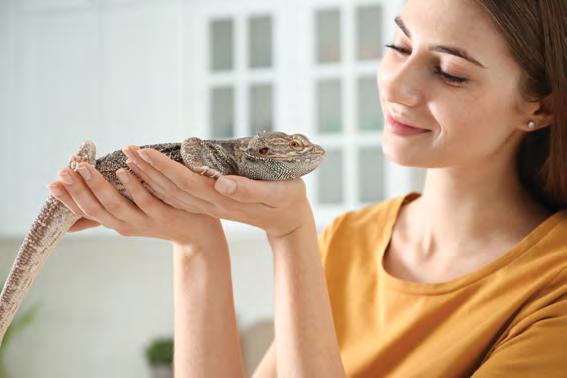


Certified Professional Pet Sitters at a previous Pet Sitter World Educational Conference
PSI members (l-r) Cathy Vaughan, Scott Black, and Morgan Andenas Weber at Texas Pet Sitters Conference. Photo provided by Cathy Vaughan.
MAKE THE MOST OF YOUR PSI MEMBERSHIP
Whether
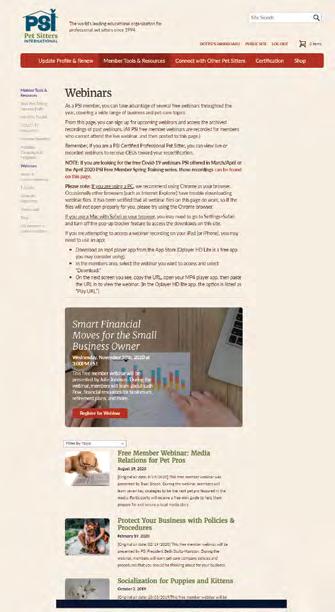

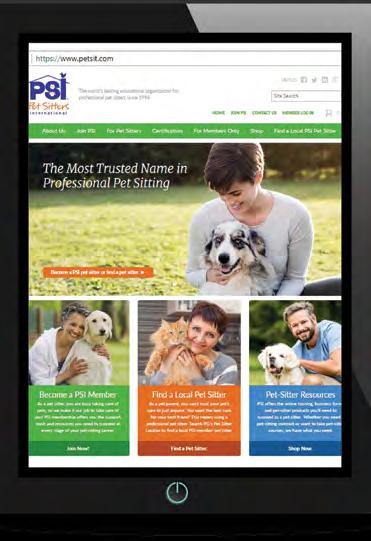
GET INSTANT ACCESS


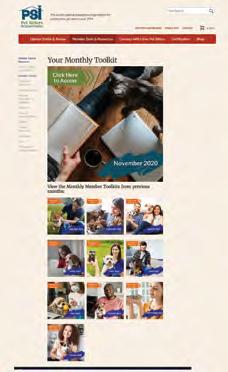
Information is right at your fingertips 24/7, 365 days a year in the Members Area of petsit.com Log in to access:
• Free Monthly Member Toolkit
• Pet-Sitting Success Path resource section
• Free custom business profile on PSI’s Pet Sitter Locator
• PSI member logos
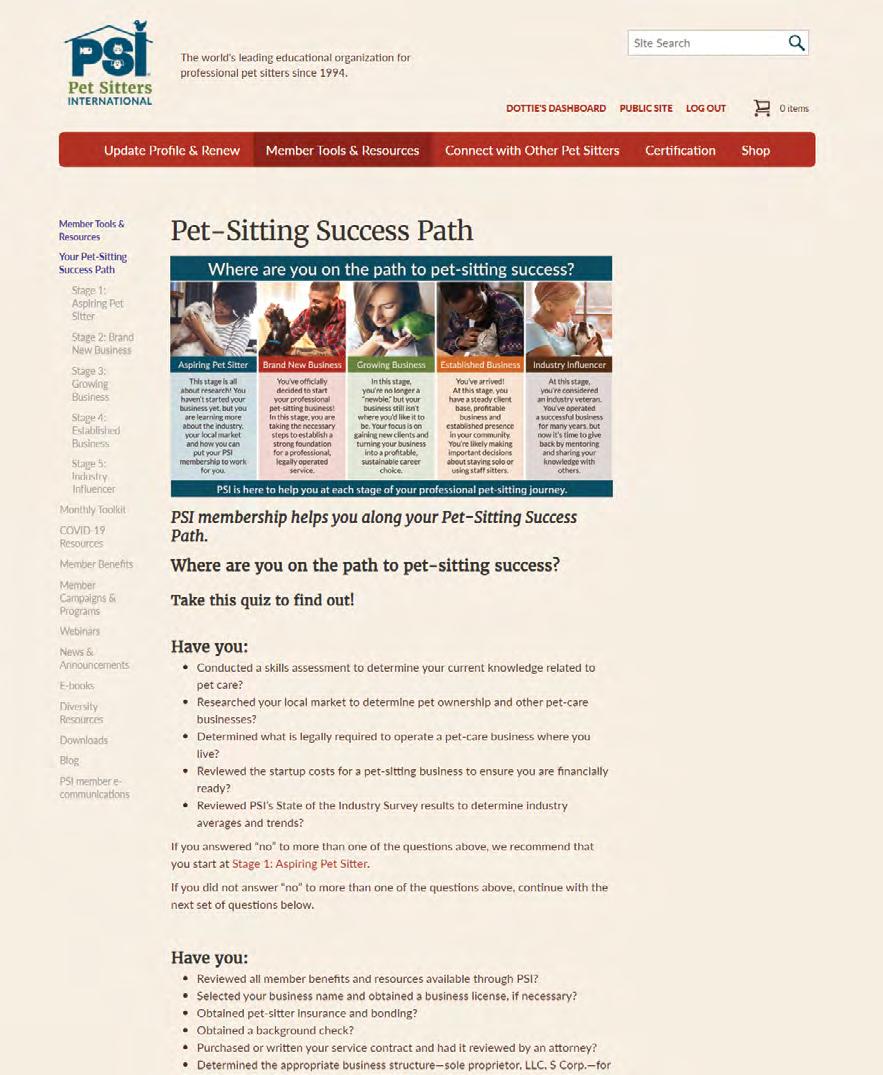


• Customizable, downloadable pet-sitter forms
• Customizable, downloadable promotional materials
• Ready-to-use social-media images
TAKE ADVANTAGE OF DISCOUNTED OFFERINGS
Access the business tools you need—at special discounts—through PSI’s Preferred Providers:
• Pet-sitter liability insurance and bonding at a group rate
• Discounted background checks for you and staff
• Assistance with health and supplemental insurance
• Discounted digital products and courses available through PSI


PARTICIPATE IN EDUCATIONAL OPPORTUNITIES
As a member you can increase and demonstrate your knowledge as a pet-care business owner. Resources and opportunities include:
• Pet Sitter’s World magazine
• Free live and on-demand webinars
• The PSI Blog
• Discounted rates on PSI’s online courses
• Discounted rate on PETSIT PRO
• Opportunity to earn the Certified Professional Pet Sitter-CPPS® designation
CONNECT WITH FELLOW PSI MEMBERS
PSI membership also offers strength in numbers. You can take advantage of a variety of opportunities to share your lessons learned and learn from fellow PSI members. Opportunities include:
• Professional Pet Sitters Chat, PSI’s private, members-only Facebook group
• Pet Sitter World, PSI’s annual in-person conference
• FOCUS, PSI’s one-day online summit for pet sitters and dog walkers
• PSI-Registered Networks
• PSI’s Facebook, Twitter, Instagram, YouTube and Pinterest
petsit.com/member-tools-resources
5 POLICIES You Need to Lead Your Team Effectively
By Courtney Underwood, HR Alignment Strategist, Kassar Consulting
It’s surprisingly common for companies to believe that they don’t need policies because they “don’t want to seem too corporate” or “their team already communicates well.” However, as situations arise and the company starts growing, the problems and limits of this mindset become obvious, including:
• Complaints of unfair treatment
• Issues that require a ton of your effort and emotional labor
• High performing employees feeling like they’re being taken for granted
• Strained relationships with clients
The truth is that effective company policies provide a framework that leads to clarity and accountability for everyone involved. Getting your expectations in writing in the early stages of growth can protect your business, reputation, and your peace of mind. While the prospect of developing an entire employee handbook can sound intimidating, a few critical policies can save money and resources as you continue to evolve. Not sure where to start?
Consider these five essential policies first:
1.
Attendance and Time Off. This is one of the most common challenges that leaders face, especially in today’s ever-changing climate. As the business owner, you know that in order to serve your customers, your team needs to show up on time, be prepared to work, and stay until the end of their assigned shift. Seems simple, right? The truth is, without a proper time off policy in place, you won’t have the answers to address real-life situations. Employees will want to know how to request time off if they’re sick or want a vacation, how much advance notice you’ll need, who to contact, and what their limits are. You’ll also want to address no call no shows, tardiness, holidays, unexcused absences, and job abandonment.
2.
Code of Conduct. As a business, it’s reasonable that you have expectations for how your team should conduct themselves. This includes how they behave towards customers, partners, and each other. Your code of conduct policy can set expectations on several topics, including dress codes, customer service, substance abuse, and navigating social media. Even in situations where employees have the best intentions, it’s important to note that mistakes happen when there aren’t clear guidelines in place. Having a policy to communicate expected behaviors prevents misunderstandings, lapses of judgment, and can protect your company’s reputation if things go awry.
3.
Payroll. Whether you have independent contractors or employees on your team, you’ll want to be clear regarding how they’re paid. Lawsuits stemming from incorrect pay are all too common, whether you’ve misclassified your contractors as employees, forgotten to
take out taxes, not withheld pay. In this the frequency of employees have who can authorize are paid or unpaid.
Corrective Action Policy. happens member is up late, or rude to address these and a corresponding Employees have they will be disciplined. fair, transparent, of your team. Doing consistency, and team culture. Addressing directly also sends your company you allow becomes Lastly, it’s especially qualified HR or policy to make sure the consequences you enact are legal.

Equal Employment Opportunity. You’ll want this policy in place to affirm that your business does not discriminate or allow harassment based on gender, race, age, sexual orientation, political affiliation, sexual identity or any other protected characteristic. This language is essential to protect your business from false claims while also providing a foundation for anti-harassment, workplace violence and diversity policies. Additionally, documenting this policy ensures a healthy working environment for your employees.
Make sure to include instructions on how to report a concern, who to report it to, an anti-retaliation statement, and guidance on how sensitive and confidential situations like these are handled.
When it comes to setting up your company for success, having procedures established in the clearest and simplest terms helps keep everyone accountable. It also helps reinforce your team culture, defines what matters most, and reassures your clients that you and your business are operating professionally. Investing the time to proactively define these policies is work worth doing. Your team, partners, customers, and staff will all thank you for it.
PROFESSIONAL
PET SITTER’S
TO-DO LIST
Consider putting these activities on your company’s to-do list for May and June.

May 2-6
May is Pet Sitter Safety Month™, so don’t miss the resources available in your Monthly Member Toolkit and at petsit.com/ safety Now is a great time to review your procedures to make sure you have incorporated basic safety precautions. And if you have staff sitters, schedule a time to review the precautions they should be taking at visits, or include tips in your staff newsletter.
May 9-13
Do you have your summer staff lined up for your business? If not, don’t delay! Put the call out for more summer sitters (for example, on your company’s social-media pages). And if you’re a solo sitter,

find some self-care activities to incorporate into your weekly routine during this busy season. Visit petsit. com and search “self-care” for tips for prioritizing your well-being.
May 16-20

Are you interested in being considered for the industry’s highest honor, PSI’s Pet Sitter of the Year™ Award? Nominate yourself now at petsit. com/pet-sitter-of-the-yearnominations. The winner will gain exposure online and in PSI’s communications, plus receive prizes! All active PSI members of at least three years (as of 1/1/2023) are eligible to apply.
May 23-27
There’s one month to go until PSI’s annual Take Your Dog To Work Day® to support pet adoption! Visit petsit.com/toolkit for partnership ideas, such as speaking about pet care at a local business’s “lunch and learn,” offering dog walks or midday potty breaks, etc. Find ways to highlight the importance of both adopting pets AND


having quality care for them.
May 30-June 3

New social-media images are available for June and July’s pet-related observances, so visit Professional Pet Sitters Chat on Facebook this week to download them, and also schedule a reminder on your phone to view your Monthly Member Toolkit for June in the Member’s area of petsit.com
June 6-10
World Pet Memorial Day is observed each June, and while pet loss is a difficult topic, it’s one that you will likely face many times as a professional pet sitter. Search “pet loss” at petsit. com to view blog posts about how to respond to the death of a client’s pet.
June 13-17
If you live in a region that is hot this time of year, stay hydrated, protect yourself from the sun, and make sure that the pets in your care are also protected. This is a great time to provide summer safety tips in a leave-behind at clients’ homes or in your client

newsletter. Presenting helpful tips not only benefits pet parents—it also positions you as a go-to source of information.
June 20-24
Will you be attending PSI’s Pet Sitter World Educational Conference this Sept. 30-Oct. 2 in Cleveland, Ohio? Don’t forget to sign up, if you haven’t already. Registration ends Aug. 15 (or whenever the conference fills up). Visit petsit. com/psw22 for additional details and to view the great lineup of speakers.
June 27-July 1
Your free social media images for July and August are now available in PSI’s private Facebook group, Professional Pet Sitters Chat, but also this month, explore ways that you can post videos and stories on your social-media pages to boost engagement. And don’t forget to view your Monthly Member Toolkit in the Member’s area of petsit.com.

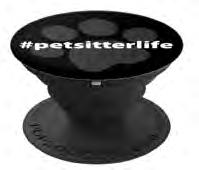



on Products by Pet Sitters International











The Common Communication Barrier No One’s Talking About
By Terri Howell, Motus Network LLC
When we think of diversity, typically race, ethnicity, or gender come to mind, but what about generational diversity? Dr. Bea Bourne, university professor and expert on generational change and development, wrote a research article in 2015 about the overlooked phenomenon of generational differences in the workplace and warned of the negative effects that could occur: general conflicts to increased stress, decreased morale and motivation, and ultimately turnover.
Before COVID-19, perhaps your pet-sitting business was soaring. After 10 years, you had reached the point where you could continue to work alone or begin hiring staff and take your business to the next level. The only potential caveat was an unforeseen event that prevented you from performing your pet-sitting duties. If you contracted a stomach bug, you had a backup plan—an agreement really—with the other reputable pet-sitting business across town. Of course, as an uber-responsible Boomer, you had never taken a sick day your entire career. You were the type that told the funeral home to be on alert if you called in sick.
Then there was COVID-19. All travel was banned. Your phone stopped ringing. Texts stopped dinging. Apparently, you were a non-essential worker. If it hadn’t been for that Dave Ramsey course, you would have gone bankrupt.
That was then. Now, masks are off. People are traveling. All your clients, and everyone they know, need your services. Gone is the radio silence. Calls and texts arrive 24/7. You have added four staff members and a website. Revenue is up, but so is your blood pressure, and your jaws hurt from grinding your teeth.
The biggest increase is in your stress level—from relying on people who don’t do things like you would, communicate like you do and, at times, seem lazy and unreliable.
You have probably experienced the awkwardness that accompanies generational differences and heard the stereotypes described. Some perceive Boomers as workaholics, Millennials as lazy. Different generations and their birth years—Traditionalists (1925-1945), Baby Boomers (1946-1964), Generation X (1965-1980), Millennials (1981-2000), and Generation Z (2001-2020)—
are convenient ways to categorize people but do not define them.
In another article about generational workplace differences, Dr. Bourne explains that each generation is shaped by major historical events, which are related to characteristic behaviors. For example, Boomers were shaped by the civil rights movement, Watergate, and the Vietnam War, and their Millennial counterparts were impacted by 9/11, Columbine, and the internet. According to Bourne, different historical experiences result in different worldviews and, therefore, require employers to use different communication approaches.
Despite the complexity of diverse generations, experiences, and values, here are some simple processes you can implement to improve communication:
• Gather: In the pet-sitting context, staff members can feel more detached than in other professions because they are dispatched to different locations. A monthly gathering for a meal and conversation can begin to form relationships and break down barriers.
• Meet One-on-One: A brief weekly one-on-one keeps communication open between the owner/manager and staff members. Ask how they are doing and actively listen. Check to see if there is anything they need to do their job more efficiently or effectively. Ask for feedback and let them know you genuinely care about them, not just as staff members but as individuals.
• Respond rather than React: When individuals say or do things you do not understand, do not assume you know what they mean. Oftentimes, a clarifying question, such as, “Am I understanding you to say …” will cut down on many miscommunications that cause problems and erode relationships. A response is a sincere attempt to understand while a reaction is simply emotional.
Communication is the heartbeat of every business, so relationships require intentionality. As communication improves and relationships grow, motivation, morale and performance will follow.

Empowering Your Pet Business Through Reading
By Doug Keeling, Owner & Founder of Bad to the Bone Pet Care
Continually educating ourselves is one of the most important things we can do as business owners and pet professionals. Taking the time to learn, and apply what we learn, is how we stay ahead of the curve and keep our businesses thriving and prosperous. Formal education and business coaches can be great, but they are also very expensive and time consuming. Books, podcasts, online forums, and our fellow pet professionals are all some of the best and cheapest educational resources available.
With today’s technology, we have access to all the books in the world and a plethora of other resources at our fingertips! As business owners, it can be difficult to find the time to educate ourselves, but platforms like Audible make it possible for us to constantly be learning, even while working!
Take the time to think about what your ideal business looks like and how it would operate, and then make a list of the steps you need to take to get there. Chances are, you will have to do something you have never done before, and therefore will need to obtain more knowledge before taking those steps. You can find audiobooks and podcasts for each of those pain points and listen to them as you are driving from client to client and at *some* drop-in visits (I wouldn’t suggest using headphones while walking a dog for safety).
When I started my pet-sitting and dog-walking business, I read every pet sitting book I could find as well as dozens of dog training books. Starting with this base knowledge about our industry and the dogs in my care allowed me to build the business of my dreams very quickly. Over the years, I have read countless books about branding building, client retention, hiring, time management, and every other pain point I have encountered in my business.
These are some of the books I would recommend to any pet business owner:
● Pet Sitting for Profit by Patti J. Moran. Pet Sitter International’s very own founder wrote this wonderful book going over all facets of running a pet-sitting and dog-walking business. This one is great for beginners!
● The Pet Sitter and Dog Walker Bible by Josh Schermer The owner of Downtown Pets and Dog Walker University wrote this book about how he started his pet-sitting business and the steps he took to become successful. This is another great read for beginner pet sitters!
● Prosperous Pet Business and Six Figure Pet Sitting by Kristen Morrison. The owner of Six Figure Pet Business Academy wrote these books as well as several others going over how to grow and scale your pet business! This is the same information that many coaches charge thousands of dollars for!
● Your Pets are Fine and Other Lies, True Adventures in Pet Sitting by Yvonne Feltman. This is a great lighthearted read about a longtime pet sitter’s experiences. This is one we can all relate to and one you’ll be sure to get a laugh out of!
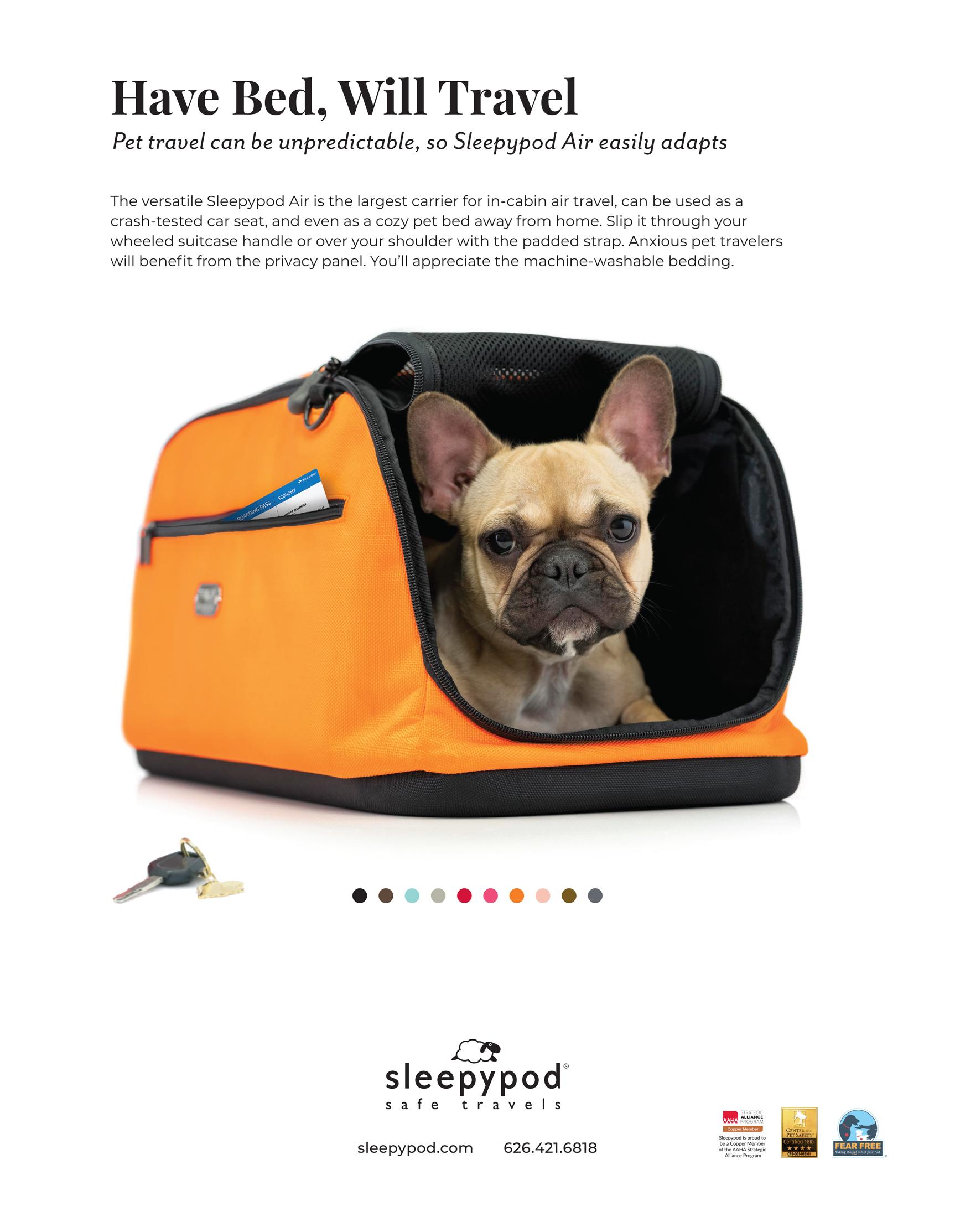















Attend this year’s conference on the Dotty Shantz Scholarship! Each year one PSI member is awarded this scholarship of up to $1,000 to help them attend PSI’s annual in-person conference. The deadline to apply for this year’s scholarship is May 15
Thank You to Our 2022 Event Sponsors:


Morgan Andenas Weber
Jennifer Betts
Denise Fleck
Terri Howell
Doug Keeling
Tabitha Kucera
Tori Mistick
David Pearsall
Lorraine Schuchart
Beth Stultz-Hairston
Austin Weber
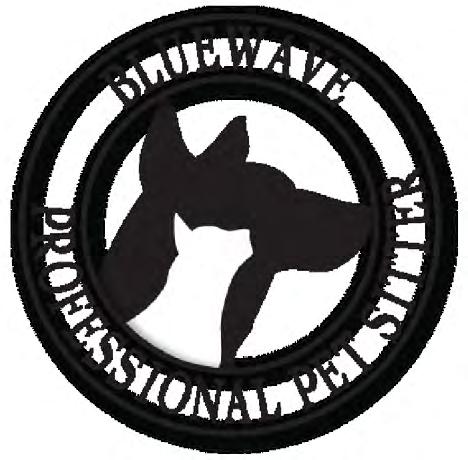
Take Your Business to the NEXT LEVEL
For over sixteen years, Bluewave Professional Pet Sitter has enabled professional pet sitters and dog walkers to streamline their office tasks so that they can better serve their clients, grow their businesses, and save time for other professional and personal endeavors.
Professional Pet Sitter features include:
• Pet Information – Detailed information concerning each pet, including veterinarian, pet routines, diet, behavior & physical characteristics, etc.
• Pet Owner Access Component – Customers can request services and follow-up on service status, utilizing your company website.
• Service scheduling – quickly schedule services involving multiple staff / multiple services with minimal effort. Service confirmations / re-confirmations can be sent when appropriate.
• Targeted Client Communication/Promotions
– Utilizing client groups, promotions can be targeted to specific clients.
• Staff Vacation/Time-off tracking
– Integrated into the scheduling process, it simplifies scheduling jobs, eliminating the opportunity to schedule staff that have requested/approved time off.
Let our proven, high-performance application be your path to success! Our friendly, knowledgeable, US-based support team is available to get you up & running quickly.
• Individual Client Pricing – Each customer has pricing-specific to their needs and services requested. Prices can be adjusted individually or as part of a group.
• Advanced Compensation Option – calculates staff compensation based on a) client, b) service, and/ or c) staff assigned. The system can calculate compensation using the most granular rule identified.
• Client profile data – Only staff responsible for the client or staff assigned to a service have access to the client profile data.
• Accounts Receivable – Quickly post payments from customers, transfer payments to multiple service orders easily. Flexibility to collect payments on your schedule.
• Reporting – Owners/Admins have access to a robust suite of historical & financial reports that can be retrieved for any desired timeframe – daily, weekly, monthly, quarterly, or annually.
Additional benefits include:
• Work whenever & wherever Our users can connect securely and effortlessly to our web-based platform from any Internet/ Wifi enabled device.
• Nothing to Install or Update
• Time Management Thoughtful design means less time at the computer, allowing for more time and freedom to do what’s important to you, like hiring & training staff and spending time with family.

Safe, Secure, Fast
Using industry-standard software and state-of-the-art hardware, your data is continually backed up & available when you need it.
Using Mother’s and Father’s Day to Boost Business
By Beth Stultz-Hairston, PSI President
Whether you have open spots in your pet-sitting calendar that you’d like to fill, or you are simply looking for a new idea to wow your current clients, Mother’s Day and Father’s Day are both often overlooked times to promote your pet-sitting business.
Need some marketing inspiration? Check out these ideas:
1. If you still have space for petsitting assignments Mother’s Day or Father’s Day weekends, email is a good place to start. Do you send your clients an email newsletter? If so, consider sending an email with a subject line like “Planning a last-minute weekend getaway for Mom [or Dad]? Don’t forget your pets!” This type of email is a great way let your clients know you still have a few spots available and to contact you to schedule their petsitting visits.
2. Want to put a smile on your clients’ faces? Consider making some simple Mother’s Day or Father’s Day cards from the pet that you could leave behind for your clients. If possible, include a photo of their pets. You can leave these at clients’ homes you will be visiting Mother’s Day weekend or the week leading up to Mother’s Day (and do the same for pet dads around Father’s Day). Happy clients are your best form of advertisement, and your clients are sure to spread the word about thoughtful gestures like this!
3. Contact your local media. Consider writing and sending a press release about what to give pet parents for Mother’s Day or Father’s
Day. This offers a unique twist on the typical articles with Mother’s Day gift ideas for moms and Father’s Day ideas for dads. Send the release to your local newspaper and news stations. If you do not already have a relationship with your local media, check out these tips for getting your pet-sitting company’s name in the news. If you have a blog for your pet-sitting business, be sure to post the release there also.
4. Share the love on social media sites. You can also use your petsitting company’s social media pages to wish your clients a Happy Mother’s Day and Father’s Day and share any special offers. Remember, photos and images get more “likes” on Facebook, so consider posting a photo or social-media image with your post. As a PSI member, you can use the Mother’s Day and Father’s Day images made available to you in PSI’s private Facebook group, Professional Pet Sitters Chat. You can also get your clients involved by asking “pet moms” and “pet dads” to share photos of themselves with their “pet children” on your page on the respective holidays. As a special “thank you” to these clients, you could even randomly select one client who shares his or her picture on your page to receive a free pet-sitting visit.


Pet First Aid & Safety
April Showers Bring May Flowers, Fruits, Weeds & Chemicals:
Springtime Pet Safety Tips
By Denise Fleck, The Pet Safety Crusader™

This article’s title may be a play on the familiar rhyme, but it’s also an important reminder to keep watchful eyes on the numerous hazards pets may encounter this time of year. Remember, though, that even as spring days are a welcomed sight in some parts of the country, professional pet sitters are wise to remember winter hazards still exist in other parts. Stay alert to weather patterns, supervise pets outside, wash melting salts from paws, and avoid antifreeze to prevent poisonous results.
Using the
SPRING
acronym, let’s explore some important safety tips to keep in mind:
Safety First
To ensure safety remains a top priority, keep these best practices in mind:
Be proactive Examine the house and yard from the pet’s height. Dogs “smell in color” and can detect scents 10,000 – 100,000 times better than humans, yet they have only 1/5 the number of receptor cells in their tongues, so they eat many things regardless of taste.
Be prepared. Have phone numbers accessible for Pet Poison Helpline [(888) 764-7661] and know the shortest route to your animal ER. Keep a well-stocked Pet First-Aid Kit handy, along with baseline vitals (including weight) for each pet you care for.
Should the worst happen, gather information, and react calmly and effectively.
Determine the type of injury, and perform a Head-toTail check to make sure no issues are missed. Take the pet’s vitals (temperature, heart rate, respiration, gum color), and observe symptoms (difficulty breathing, vomiting, diarrhea, seizures, bleeding) to report to veterinarian.
Plants
Many fruits and vegetables ripen in spring, but all are not pet safe! Every part of certain plants can be fatal while in others, it may be just the seeds or stems to beware of. Grapes and raisins can impair kidney function; seeds and pits of stone fruits (peaches, plums, apples, and cherries) contain cyanide compounds; onions and chives may cause hemolytic anemia resulting in kidney failure; and tomato and potato leaves and stems can result in digestive, nervous and/or urinary system issues. On the other hand, carrots, green beans, broccoli, spinach, apples, and bananas are beneficial for most dogs and cats, in moderation.
According to the Pet Poison Helpline®, the most poisonous plants to pets include:
• Autumn Crocus
• Azalea
• Cyclamen
• Daffodils, Tulips & Hyacinths (especially bulbs
• Dieffenbachia (leaves and stems)
• Kalanchoe (also vase water is toxic)
• Lilies (Tiger, Asiatic, Easter and Japanese Snow are fatal to cats while others may cause milder symptoms.)
• Oleander (also smoke from burning branches and water in vase)
• Sago Palm (seeds most deadly)
Additionally, what is put on the plants can be deadly—fertilizers, insecticides and weed killers which are absorbed through paws or ingested during grooming. Note that organic does not
equal “pet safe.” Blood meal is flash-frozen blood, often infused with iron resulting in a toxic overdose if consumed by a dog. Bone meal is made from animal bones ground to powder. When ingested, bone meal can form a concrete-like ball in a pet’s stomach requiring surgical removal.
Encourage clients to use pet- and wildlife-friendly products or mix up this DIY pet- and people-friendly weed killer:
• 1 gallon White Vinegar
• 2 cups Epsom Salts
• ¼ cup Dawn® Dish Soap (the original blue works best)
Spray in the morning after dew evaporates, and by dinner time…weeds are gone!
Rising Temperatures
Every system of your furry client’s body requires water to function properly, so keep pets well-hydrated and provide shade when outdoors. An air-conditioned house is safest, but the next best thing is a well ventilated and insulated doghouse, catio, or shaded porch with a fan or misting system. Be sure you know the signs of heatstroke and how to treat.
Outside food bowls should be placed in a pan containing a few inches of water to keep ants away, and outdoor water bowls must remain in the shade even when the sun moves in the late afternoon. Bowls
attached to a spigot should be regularly checked to make sure they work properly and aren’t a muddy mess from dogs who cool their paws in them. Don’t solve the problem by supplying a larger bowl which can become a bird bath making water unpotable. Cats also must drink, so try a saucer, glass or coffee mug which won’t brush whiskers making the experience enjoyable.
When transporting pets, never leave them unattended in a vehicle, even for a few minutes! Temperatures can sky-rocket quickly resulting in life-threatening conditions.
Insects
If a curious pooch or pouncing feline gets stung by a bee, scrape away the stinger if you see it. Pulling the stinger with fingers or tweezers could rupture the poison sac allowing toxin to enter the pet’s bloodstream. Most pets paw it away or rub in the grass removing it. If no medical history or current medications contraindicate, administer 1 mg Benadryl® (Diphenhydramine) per pound of the animal’s body weight, and apply a cold pack for short periods to swelling, but if swelling is severe or ANY breathing difficulty presents, do not delay getting to veterinary assistance.
While protecting yourself, be sure to prevent pets from inhaling or ingesting insect repellents and sunscreens which can cause neurological and G.I. issues, including zinc toxicity.
Noxious Products
With our pets’ keen sense of smell, inhaling even scents we find pleasant can cause them distress: watery eyes, sneezing, coughing, vomiting, seizures, and collapse. Remind clients to “spring clean” with good ventilation and allow dogs and cats to retreat to a no-smell zone.
Cleaners used on floors and countertops can be absorbed through paws then ingested during grooming. Keep pets off wet surfaces and use pet-friendly products. Mixing white vinegar 1:1 with water is safer than bleach solutions which according to Dr. Marty Becker, can make pets nose-blind for days. That would be equivalent to us losing our sight!
For ingested toxins, without exception, get your feline friend to the vet at once for decontamination. For dogs, after getting direction from your vet or poison helpline, take these steps:
• For non-caustic ingested poisons: Induce vomiting by administering 1 teaspoon fresh, bubbly, non-expired 3% hydrogen peroxide diluted with 1 teaspoon water for every 5 lbs. the dog weighs. Dribble on back of tongue until swallowed and take vomit sample, poison container and pet to the vet. NOTE: This is the latest protocol and calls for diluting peroxide with equal amounts water.
• For caustic poisons: Feed non-fat plain yogurt or plain water to dilute or
activated charcoal to bind to the poison and immediately get to veterinarian.
Grooming, Pests & Diseases
Remind clients to keep pets well-groomed, but never shave long-haired dogs or cats as fur insulates from heat, protects from sunburn, and can buffer burrs and thorns. Regular brushing can prevent mats which can harbor pests, pull on the skin and elevate temperature. Apply only veterinarian-approved flea and tick preventive and according to directions. Most problems caused are due to human error, and with 800 ticks carrying 150 potentially fatal diseases, we must not let them feed on our furry friends!
Remind clients to stay current on vaccinations and/or titer testing for Spring-emerging Parvovirus and Leptospirosis, and emphasize the importance of heartworm testing BEFORE you see your first mosquito. Prevention costs less than one weekly bistro-made coffee, whereas treatment can be expensive and difficult. Initial symptoms are unseen, but cough followed by shortness of breath, abnormal lung sounds, fluid retention, loss of blood to the brain and death can occur if a heartworm positive dog goes untreated.
Remember, the best pet first aid is the kind you don’t need to do!

Looking for an affordable, easy-to-access continuing-education solution for you or your staff?
Now choose from two PETSIT PRO subscription options:
Pet Sitter Plan for one user/individual
Business Plan for pet business owner + unlimited staff
PETSIT PRO subscribers can access:
• A new mini course each month, led by an industry expert
• A Pet Care Resource Library with 80+ training videos
• A Business Resource Library with nearly 50 training videos*
Visit petsit.com/online-courses and use coupon code WORLD5 to save $5 off the monthly subscription fee. Offer ends June 15, 2022.
*Business library not included with staff log-ins
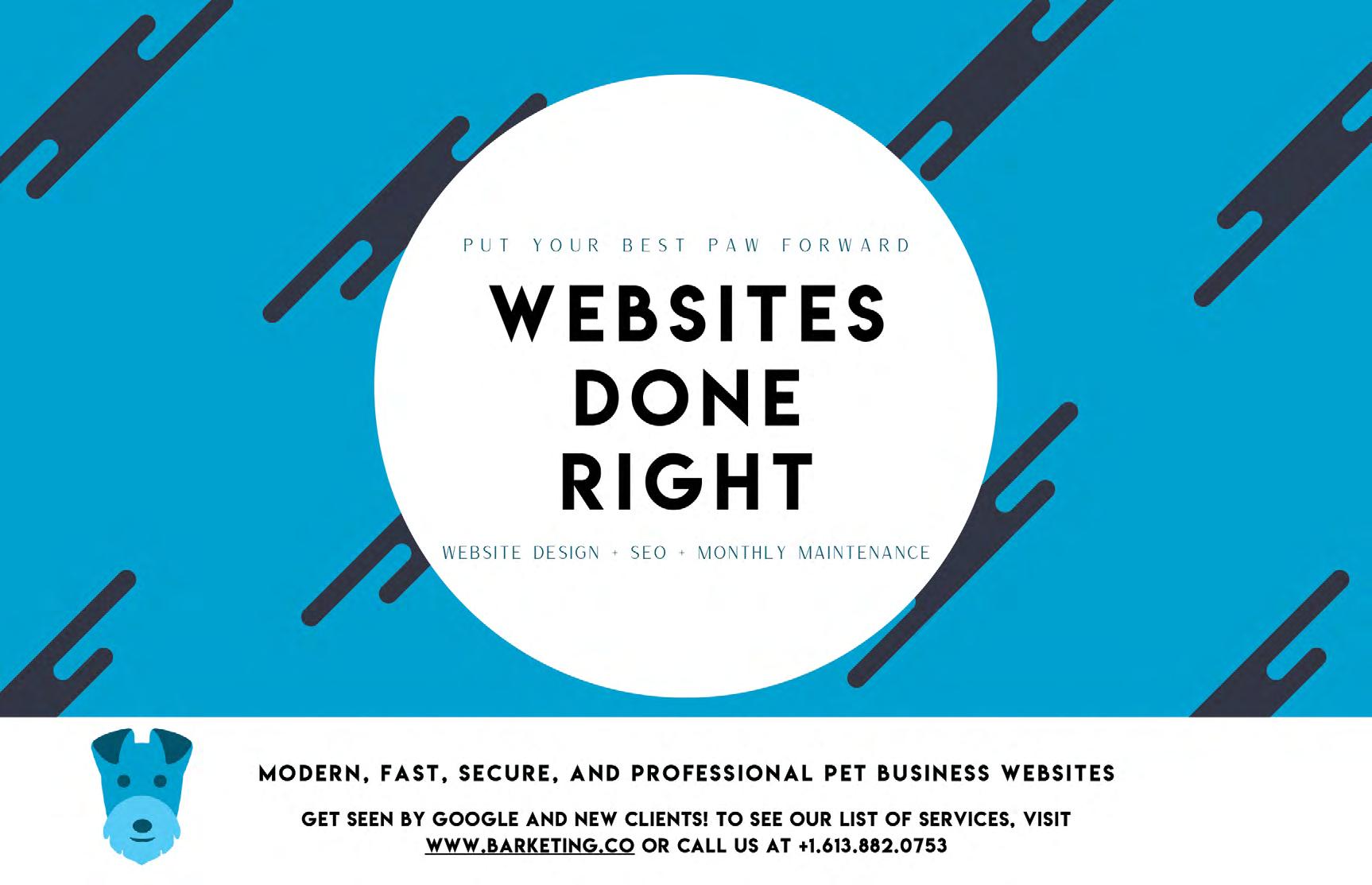
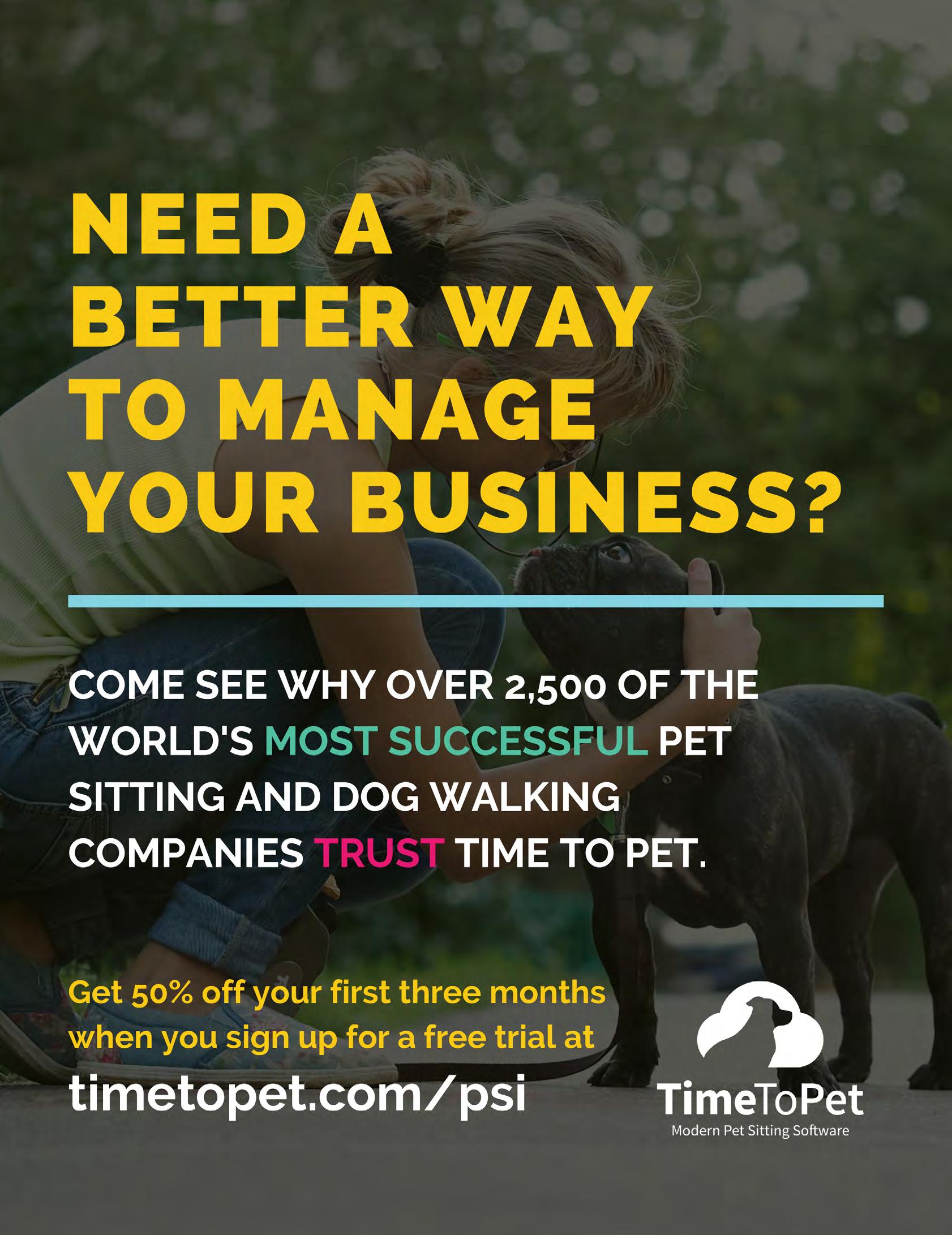
Are you taking advantage of your PSI Monthly Member Toolkit?

Each month you receive your Monthly Member Toolkit, which includes:
• Your Monthly Scoop email with trending articles you can share with clients
• A featured online article with bonus resource/special offer just for members
• A featured member resource—often a pet-sitter form template, client handout or webinar
• A monthly Facebook Live in PSI’s private, members-only Facebook group
Resources are emailed to you each Monday at the email address associated with your membership.
If you are not receiving PSI’s weekly emails, please contact PSI Member Services at info@petsit.com.
PRO TIPS


Business
DON’T CITE FUEL
With ongoing fluctuations in gas prices, many professional pet sitters and dog walkers may wonder if they should cite fuel costs as a reason for raising their rates.
While it’s important to factor in fuel costs when calculating overhead costs for your business, you should avoid citing the cost of gas as a reason for increasing your rates. Because gasoline rates fluctuate, your clients may expect your rates to decrease as soon as the cost of gasoline goes down (if you’ve used that as your reason for a rate increase).
It is perfectly acceptable to increase your rates without offering a specific reason. A pet-sitting best practice is to keep your rate-increase notification professional and very simple. If you do want to provide some sort of explanation, you could simply say, “Due to the rising costs of doing business, we will be raising rates slightly to ensure we can continue to offer the best service possible.” Because business costs typically increase over time, pet parents shouldn’t find that explanation unusual and shouldn’t tie it to a specific cost factor.
Also understand that your service fees do not have to be “one price fits all.” One way to account for fuel costs is to consider adding a mileage surcharge for assignments beyond a set mile-radius. But again, you don’t have to cite current gas rates as the reason for adding the surcharge.
Pet Care ADDRESS ALLERGIES
Is a pet in your care exhibiting allergy symptoms? Itching is a common symptom in dogs, but respiratory reactions and runny discharge from the eyes or nose can also be symptoms, as well as digestive issues, according to a VCA Animal Hospitals article. Cats can experience similar symptoms

It could be time for you to talk to the pet’s parents about the possibility of allergies, which they can address with their pet’s veterinarian. While fleas, foods or seasonal allergies may readily come to parents’ minds, they may not think to consider the home environment as well.
A recent PetMD article shares “six unexpected causes of household pet allergies”:
● Dust mites
● Dog bed stuffing
● Other pets
● Chemical skin irritants
● Indoor plants
● Smoke
While your clients could benefit from reputable information you share about pet allergies, remember that it is not your role to diagnose health problems. It will be up to a veterinarian to determine if allergies or some other health issue is the reason for a pet’s symptoms.
Marketing TALK TO SCOUTS
Talking to children about pet care and providing them with information to take home is a great way to become more involved in your local community, prepare kids to be great pet owners, and spread the word about your business (after all, their parents are your target clientele!). Have you considered speaking to a local group like Girl Scouts or Boy Scouts?
PSI member Amy Alexander, owner of Amy Lynn’s Animal Care, LLC in Colden, New York, recently posted in PSI’s private Facebook group that she had the opportunity to talk about pets and their care with her granddaughter’s Girl Scout Daisy Troop, which included 10 girls ages 5 to 7.
Amy shared: “We talked about their pets and what they feed them. The importance of veterinarians and what First-Aid is. They practiced bandaging their stuffed animals. They took home a list of what belongs in a Pet First-Aid Kit and as well as some activity pages from the PSI Early Education Program. The girls were very engaged in the conversation and the time will go toward one of their badges.”
Log in to the Members Area to access PSI’s Early Education Program materials that you can customize for elementary school children.
The Do’s & Don’ts of Online Networking
By Rachel Doran, Tell Your Tails

There’s no way around it. A big way that we connect with others nowadays is online. Whether we’re using email, social media, or any other online platform, a big component is communication. So naturally, how we communicate online is really importan—especially as local business owners. Let’s dive into the do’s and don’ts of online networking so that your pet-care business is presenting itself in the best light!
The Do’s of Online Networking
Here are some general best practices to keep in mind when communicating with anyone online. Whether you’re in their direct messages or commenting on a post, these are important things to remember:
● Do present yourself just as you would in person. It’s really that simple. Imagine that you’re meeting this person at an in-person event or at a booth at a local farmer’s market.
● Do be courteous and respectful
You’re taking up their time, and oftentimes, inserting yourself into the conversation, so make sure that you’re showcasing yourself (and your business) in a positive light.
● Do have a normal conversation with them. Just as with any relationship, easing slowly into things will get you a lot further than jumping right into what you want from them.
● Do ask yourself, “What’s in it for them?” Is your reaching out helpful or interesting to them in any way? Or are you just solely focused on your own business agenda?
● Do think before typing. And pause before you post. If you find yourself typing something up passionately, chances are you’re leaving room for something to be misconstrued or misunderstood. Taking an extra moment to breathe and re-read is always essential.
Connecting with Other Local Businesses
Connecting with other local businesses is so important. Not only do these relationships have the potential to benefit your business with things like bringing in new customers and new exposure, but these collaborations also show your existing clients that you’re a true professional within your industry. When other businesses know, like, and trust your pet-sitting business, it builds your likability and trust factor within the community as a whole!

Here are some tips to make networking with other businesses a whole lot more successful:
● Do try to get to know them and their business first. This may mean following them on social media, tuning into their business happenings, or attending their events.
● Do remember that this is a two-way street. How can both businesses benefit from this relationship? Go into any conversation knowing that you need to do something for them in return. How can you help them?
● Do be cognizant of when and where you might be construed as competition. Is what you’re doing going to create an unpleasant situation or problem with a competitor? Avoid any situations that might be construed as “stepping on toes.”
Do join communities, networking groups, or associations (like Pet Sitters International). This will help you meet fellow business owners and expand your professional network.
Do touch base with other businesses regularly. Networking is a long-term business strategy. Keep the relationship fresh by checking in regularly. Ask them how they’re doing, how the business is going, and ask how you can help them at this time.
Do set calendar reminders to check in with fellow businesses! Hey, if you have a hard time remembering to check in, add networking into your business routine so that you’re sure to prioritize it.
The Don’ts of Online Networking
● Don’t start the conversation off “hot.” No one likes feeling used. If you jump right into asking for someone to make a purchase, you’re guaranteed to really rub them the wrong way. The same goes for asking for help with something. Make sure you’re not just asking for a huge favor out of the blue.
● Don’t skip the “getting to know you” phase. Ask about them, talk about things that you might have in common, and build an actual relationship with them!
● Don’t drop the ball. This should go without saying, but if you promise something to someone, make sure to follow through!
Examples of Online Networking Situations…and How to Handle Them!
Sometimes it can be best to learn by example, right? We’ve put together some totally common situations and how to handle them in a way that puts your business in the best possible light.
Example 1: You’ve come across an adorable dog Instagram account
when scrolling through Instagram. And you even see that they’re local to your area!
It can be really tempting to reach out to this account and promote your business. But instead, let’s play the “long game” here.
Remember the do’s and don’ts we’ve shared above. Start a normal conversation with this account. Ask them questions about their dog, laugh at their jokes, and engage with their content where it makes sense. Your goal here is to help them get to know you, your business, and build trust in you.
Example 2: You’re in a pet industry Facebook group and see a post from another pet business. There’s definitely an opportunity for you to hop into the comments and promote your own pet-sitting business. Do you do it?
This one can be a tough one. And the answer will depend on the specific post. So your best bet is to visit the do’s and don’ts above and make an executive decision. Would a comment truly add value? Or would it take over another business’ post entirely?
Example 3: Someone posts on Nextdoor asking for a pet-sitter recommendation in your area! For posts like this, you absolutely want to comment and share more information about your pet-sitting business. Because this person is directly asking for this information, you know that you’re providing actual value to them.
Pro tip: What also helps in these situations is having others who recommend you because word-of-mouth recommendations are gold! While you certainly don’t want to ask current clients to comment, promoting you, you do want to make sure that you create a business so loved that people comment on their own accord! This is easier said than done but a goal to strive for nonetheless!

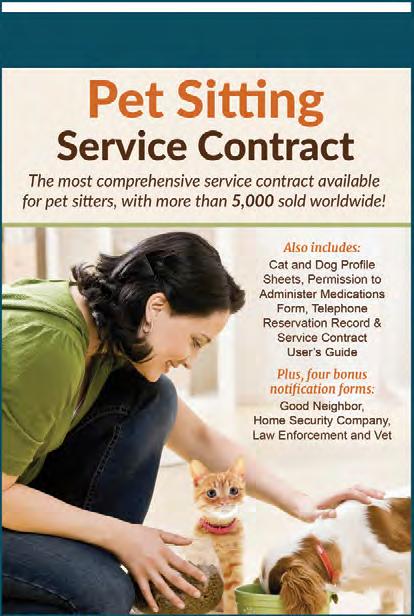

a
Join the hundreds of fellow pet-care professionals who have earned the CPPS® designation. Sign up for the CPPS exam for half off! Use promo code CPPSHALF by 5/31 to register for just $137.50. Make 2022 the year you become a CPPS. • petsit.com/cpps
